Wild Appetite
Volume
Issue 24

Volume
Issue 24
“Fish On” could have been the slogan for this year’s Texas International Fishing Tournament.
From the tiniest piggy perch to the 75-plus-pound wahoo or the many billfish caught during the tournament’s 83rd year, anglers reported great fishing — especially offshore.

In the bay, one team even managed to catch a 9-pound red drum that shockingly fell within the slot of 20-28
But the tournament glory went to , which also grabbed the big prize — the 2023 Gulf Champion of the Sport Fishing Championship, a fivetournament series which also includes events in Louisiana, Florida, Mississippi and Alabama.
By Nate SkinnerFor Lone Star outdoor newS
At Spread Oaks Ranch, northwest of Bay City, you can often find a chef who strives to push the boundaries of traditional wild game cooking by thinking outside the box. Ric Rosser feels the skillset he has developed over the years as an avid

Originally from Bryan, Rosser started shooting a bow at only 4 years old. As soon as he was old enough, he started bowhunting with his dad.
His culinary career began while working in fine dining at the age of 19. He decided to enroll in culinary school, moved to Houston and obtained a
a chef for different restaurants and entities where he gained a wide range of skills and experience.
“Culinary school gave me a great foundation to begin my career, but the knowledge I have acquired over the years truly came from other chefs who challenged me to push
other chefs, as he had familiarity in areas other chefs found themselves feeling uncomfortable.
“Because I was a hunter, I already had a lot of experience and knowledge about butchering and muscle groups,” Rosser said. “Nowadays, it has become popular to cook a whole
Please turn to page 6


Rivers across Texas have been producing a variety of species for those who have been willing to stray from the beaten path. Riverbound anglers and fishing guides have been catching largemouth bass, catfish, alligator gar, stripers and sand bass, among other types of fish. Under the sweltering,
late-summer conditions, the best action has been coming during the first few hours of the day.
Diego Medina has been targeting bass in the Elm Creek area of the Frio River above Choke Canyon Reservoir. He said hollow-body top-water frogs have been drawing strikes from solid largemouths during the early-morning hours, noting that most of the fish have

been hanging tight to grass mats and flooded vegetation along the bank in 4 feet of water or less.
Later in the morning after the frog bite dies off, Medina has been able to hook up with bass by targeting stumps out off the bank in 8-9 feet of water using chatterbaits and swim jigs. The water has been fairly stained, though, so lures in darker color patterns have been
Please turn to page 22
The SFC also presented a replica check for $100,000 to the team. Next up is the final tournament in Puerto Rico, where a $1 million pot is up for grabs — a prize the team won in 2022.
Even before the boat made it back to the dock at the Port Isabel Marina Saturday, Aug. 5, Tim Smith, the TIFT host and a weatherman at one of the Rio Grande television stations, kept announcing the anticipated arrival of the boat and its crew.
Please turn to page 17







 By Craig Nyhus Lone Star outdoor newS
By Craig Nyhus Lone Star outdoor newS
Legislation that seemingly passed without attention or opposition created a stir in some of the hunting community. After the passing of SB 1236, hunting with a rifle or bow on Texas’ navigable riverbeds is prohibited statewide as of Sept. 1.
Rifle hunting on some riverbeds has been prohibited for
years in certain counties, beginning along the Nueces River. Since that time, landowners adjacent to other riverbeds have sought to be added, requiring additional legislation.
Sen. Pete Flores (R-Pleasanton) said his original bill, which sought to add Lampasas County to the existing list of 10 counties where discharging a firearm from a riverbed was already prohibited, said the legislation stemmed from
landowner complaints in Lampasas County.
“Near Stillhouse, a man had a guide service and was taking hunters on day hunts along the riverbed,” Flores said. “The ranches on both sides were seeing a decrease in their deer numbers.”
Although it’s already illegal to discharge a firearm across property lines, Flores, a former game warden and former director of law enforcement at
Texas Parks and Wildlife Department, said enforcement is extremely difficult.
“It’s really hard to prove the projectile entered the property and find the round,” he said.
Flores said during the entire legislative process, comments and testimony were received from landowners across the state.
Landowners and cowboys working cattle were concerned about people shooting, often
When people think of a gun dog, they think of a retriever, a ety of dog breeds are incorporated into hunting practices, but only sportsmen in certain areas of the South would ever know about Texas certainly falls within that munity of hunters here who are infatuated with the tradition of trained dog. For many of them, however, the obsession runs
ing, hog doggers all seem to have their own tricks and strategies when it comes to the types of dogs they use and how they like
Veteran hog dogger Cayson George fell in love with the sport when he was just a kid living on a ranch in West Texas. He was in the first grade when a family friend started chasing hogs with dogs on his family’s property, and he bought his first two hunting
Today, when he’s not working as a real estate agent, he’s guiding hunts for pigs on ranches between
The Biden Administration is taking what many youth outdoor and conservation groups feel is a shot across the bow at American hunters, particularly children.
The Department of Education is now withholding funds for elementary and secondary schools nationwide that have hunting or archery programs in their curriculum.

The Department claimed in a statement that its funding decisions were based on the interpretation of the Bipartisan Safer
Communities Act which Congress passed and President Biden signed last year after a number of mass shootings. The agency’s interpretation means funding for shooting sport activities earmarked under the Elementary and Secondary Education Act of 1965 will be blocked across the country.
The agency’s interpretation would impact thousands of schools and millions of American students.
The National Archery in the Schools Program currently has
1.3 million students from nearly 9,000 schools across 49 states enrolled in archery courses. Tommy
Floyd, the organization’s presi dent, said some of those schools have canceled plans to include archery or hunting education courses in their curriculum due to the agency’s action.
“It’s a negative for children. As a former educator of 30-plus years, I was always trying to find a way to engage students,” Floyd said. “In many communities, it’s a shooting sport, and the skills from shooting sports, that help young people grow to be respon sible adults.”
Lubbock and Amarillo with dogs he raised and trained himself. He prefers to run just two bay dogs at a time during a hunt, rather than using a larger group of dogs.
“In my opinion, a pig feels less pressured when there are only a couple of dogs chasing it,” George said. “This tends to result in the pig stopping in its tracks, rather than running for miles on end, which allows me to bring in a catch dog fairly quickly. I’ve used larger groups of bay dogs in the past, and that has seemed to just prolong the chase, at least in my experience.”
The bond George has with his dogs is as unique as it is strong, which is why most hog doggers do what they do.
“I can almost tell you exactly what my bay dogs have encountered just by how their barks sound when they corner a pig or a group of pigs,” George said. “The tone and cadence of their barks reveal whether they have just bayed a single, large boar, a sounder, or just an average-sized hog.”
Kendalia-area hog dogger Byrun Mabry has been chasing hogs with dogs for about a decade. He grew up on a ranch where he raised herding dogs for sheep and cattle, and the idea of hunting with dogs always appealed to him. Once he started hunting with dogs, he was hooked.
Please turn to page 6


 By Craig Nyhus
Lone Star outdoor newS
By Craig Nyhus
Lone Star outdoor newS
An emergency rule added movement and testing restrictions for white-tailed deer in breeding facilities.
The change affects deer being transferred from one facility to another, or to a release site, and identification tags on breeder deer.
Since June, TPWD has received confirmation of cases of chronic wasting disease in deer breeding facilities in three counties: Brooks, Frio and Zavala. In 2023, there have been detections in nine deer facilities in seven counties.

Now, all deer must be antemortem (live animal) tested for CWD (with a test result of “Not Detected”) before being transferred. The order also prohibits the removal of identification tags, which TPWD said was done “to expedite and facilitate epidemiological investigations.”
There also will be changes to CWD surveillance zones.
Previously, zone creation was changed in the case of positive deer at a breeding facility to a size two miles from the perimeter of the infected facility, a process reducing the number of landowners affected by the zones by as much as 90 percent. The zones may be lifted after three hunting seasons.
For Lone Star outdoor newS

Armadillo Outfitters is not the typical enterprise for hunters and anglers. The apparel company sells custom embroidered clothes that can sport anyone’s favorite Texas bird, wild animal or fish.
Located in Wimberley, a small town southwest of Austin in Hays County, Armadillo Outfitters has been in business since 2010.
Much of the embroidered flora, fauna and other motifs are images of artwork from outdoor artists, including Don Breeden of Brownsville, David Danforth of Florida and Don McQueen, who is also from Texas.
Owner Vincent LeMonde said he started working with stitches while working with his grandmother, Regina Thompson, whose skills fascinated him.
”She was an embroiderer,” he said. “I began helping her with craft shows, running the cash register.”
Although he had experience with silk screen printing, LeMonde learned the new trade from Thompson. His early days as an embroiderer consisted of selling caps with all sort of logos and names.
A few years later, he started specializing in Texas wildlife, focusing on white-tailed deer, ducks, birds and fish.

And, to take his business to another level, LeMonde said he took on another quest with several Texas artists. He knew Breeden through his mother-in-law and made contact with other artists.
His embroideries are commonly seen on the performance fishing shirts sold at most sporting goods stores.
When asked why he named his business Armadillo Outfitters, LLC, he said it comes from “alpha omega” — the A for armadillo and the O for outfitters.
“It’s catchy,” he added. “It’s a very strong name.”


He promotes his business with a logo that reads, “The Pride of Texas.”
His products are on display at shows held across the state, such as during the recent Hunters & Sportsman Expo held in McAllen. Brownsville resident Mack Buldick said he has been coming to the expo for the last 17 years for a couple of reasons.
“One,” he said, while looking at LeMonde apparel on display, “is to buy one of these shirts.”

Continued from page 1 muscle group or a whole animal like a pig, but that wasn’t the case in the cu linary world 10-15 years ago. Fortu nately, I was pretty good at it because it was something I had been doing my en tire life.”



Cooking has nev er been just a job for Rosser, but rather something he has always incorporated into his everyday life. When his two sons started duck hunting with him, he would cook fairly elaborate meals on the tailgate of his truck after the hunt. Refusing to simply grab some fast food on the way home, he instead wanted to show his boys the importance of enjoying and eating good food, no mat ter where life might take them.
What Rosser finds special about wild game cook ing, though, is the field-to-table aspect. While the cooking world puts a lot of emphasis on knowing where meat comes from, he feels that nobody understands the cut of meat they’re consuming better than a hunter.

“As hunters, we study the animals that we pursue, and in some instances, we even obsess over them,” he said. “We know where that animal has been, what it has been eating, and sometimes we even spend years observing that animal before we ever harvest it. There’s way more depth there than just purchasing a cut of beef at the store that has a label on it that says ‘grass-fed.’ Knowing where your meat comes from goes well beyond what’s written on any label.”
According to Rosser, passion and emotion play a huge role in cooking wild game, especially that which you harvested yourself. For example, he said he could easily prepare steaks for guests, and that they would most likely enjoy them. However, he would be much more enthusiastic about cooking duck from a duck hunt he was on, or venison from a memorable deer hunt.

The seasoned chef enjoys challenging himself to find foods that pair well with wild game. He recently discovered that black-eyed peas and dove are an excellent combination. He has also recently enjoyed experimenting with aging certain forms of wild game meat like venison from white-tailed deer.


“My goal in the kitchen is to press the culinary boundaries of what wild game is really known for,” Rosser said. “It’s a fun and exciting journey, and there’s never a dull moment.”
Rosser said the network of contacts and friends he has developed through the hunting community at Spread Oaks Ranch continually helps him come up with new ideas for wild game recipes.
Continued from page 4
The tight, niche community has had a significant influence on Mabry’s ability to become a better hog hunter, as he was fortunate enough to have some experienced hunters show him the ropes when he first got into the sport. He now hunts with a line of dogs he has bred, raised and trained himself.
“It’s amazing how much young dogs can learn from other dogs with more experience,” Mabry said. “I’m just grateful that other hunters were kind enough to help me learn how to pursue hogs with dogs.”
Matt Klentzman got into running dogs many years ago as a way to give back to the veteran community. He and some friends co-founded an organization called Veterans Xtreme Adventures, which helps veterans develop a community of support by giving them opportunities to participate in outdoor activities like hunting.

“Hunting with dogs allowed us to host hunts in a controlled, organized environ-





ment that reduced certain risks that would have been present had there been firearms involved,” Klentzman said. “It turns out pursuing hogs with dogs was something a lot of the vets we were taking hunting could relate to. The strategy, planning and organization that goes hand in hand with that style of hunting, combined with the adrenaline rush of the chase, was something that they had all experienced throughout their military careers. Hog dogging gave us the opportunity to help make a difference in their lives.”
One of the things Klentzman loves most about hunting hogs with dogs, is seeing the dogs’ mannerisms change as their instincts kick in. He said the dogs can go from being a docile pet to a fired-up hunting animal, and then back to calm, loving pet once again.
“The dogs truly make each hunt special,” Klentzman said.


Continued from page 4
recreationally, in the riverbed.
“They were concerned for their workers and children,” Flores said. “It was a safety issue and concerning to the legislators.”
The Water, Agriculture and Rural Af fairs committee chairman, Sen. Charles Perry (R-Lubbock), filed similar legislation to add five additional northern counties.
After hearings on both bills, Perry sug gested the bills be combined and the law become uniform and statewide. It passed both houses almost unanimously and was signed by Gov. Greg Abbott.
Cable Smith, host of the Lone Star Out doors Show (not affiliated with Lone Star Outdoor News), posted opinions against the legislation and Flores, followed by a number of comments, including those questioning why bowhunting was includ ed.
“Pete helped pass SB 1236 which closed over 190,000 miles of Texas riverbeds/ streams and over 650,000 acres of public land to bow and rifle hunters,” Smith said.

Smith also claimed “SB 1236 was kept quiet and the original proposal was expanded statewide in a last-minute amendment;” asserted the statute was to protect wealthy landowners; and posted arguably offensive images in reference to the senator.
Robert Ramirez, a former hunter ed manager with TPWD who has hunted navigable waterways, appeared on Smith’s broadcast.
“Your rights to public land have been taken away,” Ramirez said. “You can’t shoot squirrels and rabbits with a .22. You can shoot a feral hog from a helicopter, but you can’t shoot one with a bow in a public riverbed.”
Ramirez noted that some riverbeds can be half a mile wide, with islands scattered throughout.
Where were the archery groups, trade associations and other groups when the legislation was being considered?
“Our bird dog was asleep on the porch,” Ramirez said. “We donate to these organizations to be our watchdog. They dropped the ball.”

Flores disagreed with the assertion the bill was kept quiet during the legislative process.
“This law has been on the books for years in much of the state,” he said. “Each session, legislators filed bills to add their
a former TPWD Government Relations Director, said the testimony in support of the bill came from a range of landowners.
“One man said his kids were playing and guys were down the river busting off .308 rounds,” he said. “Others were using it as a highway to access ranches — it’s hard to maintain a fence along a river. Kids fishing and playing on the river were the main concern for legislators; they aren’t dressed in blaze orange.”
Under the legislation, people are not banned from traveling and recreating along riverbeds. Duck hunting with shot guns, alligator hunting, fishing and bow fishing are still permitted.
According to the Texas River Guide pro duced by Texas Parks and Wildlife Depart ment, a stream in Texas is public if it is “navigable in fact” or “navigable by stat ute.” Whether a stream is navigable in fact is based on the idea of public utility. One court noted “[w]aters, which in their natural state are useful to the public for a considerable portion of the year are navi gable.”

A stream is navigable by statute if it re tains an average width of 30 feet from the mouth up. A navigable stream may be dry part of the year, but does not lose its character as a navigable stream.
As for the negative posts, Flores wasn’t fazed.

“I’ve been called worse things by people in a deer camp,” he said.

Continued from page 4
and certify more than 500,000 students annually.

The BSCA language in question interprets a subsection listing prohibited uses for federal school funding, which forbids funds from helping provide any person with a dangerous weapon or to provide “training in the use of a dangerous weapon.”
Senators and representatives disagreed and plan to take action when Congress returns to session in late September. In a letter to Education Secretary Miguel Cardona, Sens. John Cornyn, R-Texas, and Thom Tillis, R-N.C., said the agency is misinterpreting the provision which was included in the BSCA last year to withhold education funds for programs training school resource officers, not to preclude funding for hunting and archery classes. School resource officer training was funded under a separate provision.
The ESEA is the primary source of federal aid for elementary and secondary education across the country.


“The Biden administration is DEFUNDING school hunting and archery programs,” Rep. Tom Tiffany, R-Wisc., tweeted. “Wisconsin students should not be pawns in Joe Biden’s misguided crusade against America’s sportsmen.”
Scot McClure, the director of education of Outdoors Tomorrow Foundation, based in Dallas, said the Administration’s agency made a “huge overstep,” but is encouraging schools participating in the organiza-

tion’s Outdoor Adventures program to take a step back and wait.
The program is currently in 1,200 schools in 48 states, with 120,000 kids participating. In addition to many outdoor skills, the program includes archery and some programs include hunter education.
“About 30 percent of the schools are receiving federal funds,” McClure said. “The ones that do are generally in poorer areas.”
McClure believes Congress will reverse the agency’s decision.
“This is a program that saves kids and changes their lives,” he said. “Many of the 1.2 million parents whose kids are involved are going to be in an uproar. I think it’s likely it will be cleared up by early October.”
The kids affected are the ones who need the programs most, McClure said.
“You take away services from them, you impede the child who already has enough struggles,” he said.
In Texas, physical education standards specifically state archery and hunter ed can be taught as physical education courses.
According to the Texas Wildlife Association, 1,700 Texas schools participate in the National Archery in Schools Program, and several thousand young Texans complete their hunter ed certifications in school each year.
TWA said in a statement that schools should not be forced to choose between outdoor education and federal funding, saying, “Our kids deserve better.”
Armed with gigs and lights, flatfish fanatics have been beating the heat and chasing flounder at night along the flats. Periods of low water levels during peak low tides have limited where they have been able to go.
Those willing to put in the time have been stumbling upon good numbers, but have had to cover plenty of water, as the fish have been scattered. According to anglers and guides along the coast, the best action has come during the incoming tide.
Josh Cope and Mark Watts have been spending most of their time floundering in lower West Galveston Bay and Drum Bay out of a fan boat rigged with lights. Cope said they’ve had to cover a lot of water to find decent numbers of fish during an outgoing tide, but have encountered larger concentrations when the tide has been coming in.
Most of the flounder Cope and Watts have been gigging have been in the 17- to 19-inch range, primarily along main bay shorelines with clean water.

“Areas with sand, grass and mud have all produced lately,” Cope said. “Most of the fish have been pretty shallow, too. In some areas, I’ve been getting out of the boat and walking alongside it, just so it will be able to float. That’s how skinny some of the fish have been.”
Capt. Tommy Mikusek has been gigging with his customers from the San Luis Pass on down toward Freeport, pointing to low tides overnight as the best time to find fish.
“The flounder have been all over the place, and there’s really been no rhyme or reason to their movements,” Mikusek said. “Right now, any stretch of water the boat will float in has the potential to hold fish.”
Mikusek said he’s been finding the most fish from the middle of the night through the wee hours of the morning when the tide has been turning to start coming in. Although there have been plenty of solid keepers, he’s seeing a ton of undersized flounder.
Most of the flounder Mikusek’s anglers have been gigging have been anywhere from 18 to 22 inches. While most stretches of water are holding scattered numbers of fish, he will occasionally see three or four stacked up together.
During some nights, Mikusek has found fish staging mostly over hard sand, and on other nights, the flounder have been holding tight to mud or grass. Playing the tides has been the key, he said.
The Colorado River is where fishing guide, Mark Talasek, has been chasing flounder at night recently. Lower-thanaverage tides have made gigging tough in Matagorda Bay, so he’s been focusing on sandbars and flats with clear water up the Colorado. Areas with one fish tend to be
Although it might not be as popular as some other Texas beaches, Matagorda Beach is still a great spot for day trips, camping and fishing. It is particularly well known for its shark fishing opportunities in addition to the usual Gulf Coast trio of redfish, flounder and speckled trout.
What makes anglers target sharks? In the case of Mitchell Murphy and his young nephews, it was for the sake of experience and conservation.
Knowing their upcoming vacation was taking them to Matagorda Beach, he arranged for the group to participate in the National Oceanic and Atmospheric Administration cooperative shark tagging program. As a result, Murphy

helped turn his new in-law’s annual family vacation from a purely recreational trip to an educational opportunity, fostering the ideas of conservation and stewardship in these young outdoorsmen. Since this was his first year attending the annual family trip, Murphy felt the need to make his mark.
“Being the new uncle, I kind of wanted to bring something
to the party,” Murphy said when asked how the idea of tagging sharks came to be.
He knew the boys love to hunt and fish, but their saltwater fishing experience was limited to throwing shrimp off the pier and catching hardheads.

“They’ve never caught a redfish. They’ve never caught a shark,” Murphy said. “And these were things I wanted to
Please turn to page 17
A favorite sight for anglers is a school of white bass blasting shad. Sometimes they can cover about an acre of water, and it’s easy fishing with a variety of topwater lures.
At times there can be acres of white bass busting shad on the surface of Lake Ray Hubbard. From August through October, the white bass chow down on schools of shad on the surface and off extended points in 15-35 feet of water.
Guide John Varner has been putting folks on white bass at this lake for 22 years.
“Right now, the schooling action on the surface is as good as it gets on any lake in Texas,” Varner said. “It’s easy fishing, and the kids really get into it, as do the adults. It’s not unusual for each angler to catch upwards of 20 or more whites within a few hours of fishing.”
The daily limit of white bass on Ray Hubbard is 25 per person with a 10-inch minimum length. A lot of the schooling whites will be in the 10- to 11-inch class. Varner said most of his trips involve a lot of catch and release, but there are plenty of anglers who like to take a limit to the
cleaning tables.
The best top-water bite is in the early morning in 5-12 feet of water where the fish are feeding on shad moving down the shorelines. By the time it starts heat ing up, however, the fish will go deeper.
When the whites are on the surface, Varner said just about any small top-wa ter lures will catch white bass, but two fa vorites are a chartreuse Tiny Torpedo and a 4-inch Super Spook.
When the fish move out, Varner likes to fish deep with slab spoons, having cus tomers lower the slabs to the bottom and bring them up about 2 feet before letting them fall again. Sandies will often hit the spoon on the fall.
Since the lake is so close to Dallas, though, it does get a lot of pressure on the weekends.
“Now it’s mostly pleasure boats, and it’s not as crowded as it has been in past years. The best fishing is during the week when there aren’t so many boats running up and down the lake.”
Varner also takes fly anglers out to pur sue white bass on top-water.
“Whites will smack a big foam popper with a silver flash tail all day long,” he said. “And streamers that look like shad are good as well.”
This is the time of summer when the Gulf of Mexico is often as calm as it gets, opening a window for an assortment of fish.
Fred Raines made a recent trip out of Port O’Connor with a few friends. The target fish was red snapper, so Raines rigged up a nylon-tailed jig and placed a live piggy perch on the hook.
“I like to fish lures in conjunction with live baits like piggy perch, mullet and shrimp,” he said. “The combination of a jig with a live bait is too much to resist for lots of gamefish like king mackerel and ling. We had limits of snapper and one very nice ling. The Gulf was calm and we had a lot of fun.”
Greg Gamble, who grew up fishing the Texas Gulf Coast, now lives in Nashville, Tennessee, but makes it a point to return to the Texas Coast in August and September. Snapper are not the only fish on his target list, though, as he also loves chasing ling and king mackerel.
“We do a lot of fishing over wrecks and rocks from 30 to 50 miles offshore,” Gamble said. “On the way out, we fish the anchored shrimp boats, and that’s where we can usually find ling, kings and bonito. The bonito make great cut bait for catching the bigger snapper, and the ling are hanging out around the shrimpers.
“After feeding on the cull being shoveled overboard from a night of pulling nets for shrimp, the ling will hang out in the shade of the shrimpers. A trick for pulling them out from under a shrimp boat is to toss out a handful of cut-up Spanish sardines.”
When the ling come out to get the chum, Gamble’s group will pitch 1-ounce bucktail jigs tipped with a cigar minnow or live piggy perch.
According to offshore boat captains, fishing out of Port Mansfield has been great for the past few weeks. Some customers are finding success by casting top-water plugs — namely

Please turn to page 18
For Lone Star outdoor newS
After a certain point, a trend can wind up so common it becomes a mainstay. In the deeprooted traditions of Texas fishing, one that has finally made that transition is fly-fishing. Far less favored in generations past, its prominence is no longer a surprise to Kevin Stubbs. He runs Expedition Outfitters, a New Braunfels-area fly-fishing guide service that offers some unique experiences to those anglers keen on standing in a river and waving a stick, as the writer John Gierach liked to put it.
“Fly-fishing is becoming more popular in Texas,” Stubbs said matter-of-factly. “And the ranks are growing.”
That growth was steady for the last few decades, but the more recent pandemic led to an even bigger boom.
Stubbs has seen it evolve first-hand since his early days as a contract hunting and fishing guide on the King Ranch and several other large South Texas properties. After spending time in Colorado training to be a fly-fishing guide on the Roaring Fork and Crystal Rivers, as well as stints in Seattle and the Twin Cities of Minnesota, Stubbs made his return to Texas and started Expedition Outfitters in 2001.
Though it’s tough to compare to the trout streams, cooler climate and mountainous terrain of other U.S. regions, Texas is staking its claim as a spot where fly anglers can have just as much fun and fulfill just as many of the same aspirations. You just have to have an open mind and know where to look.
“Many people from out of state do not realize we have the spring-fed streams and rivers in the Texas Hill Country,” Stubbs said. “The clarity of the spring-fed waters tends to play well with fly presentation and the cool waters are refreshing during the

summer months.”
Maybe they aren’t catching native trout, but the species available to fly anglers in Texas are special in their own way.
Perhaps the best thing Texas fly-fishing has going for it, and what Stubbs says is his personal favorite, is the offshore saltwater opportunities.

“I love fly-fishing in many different places in Texas, but the Gulf of Mexico offshore of Port Aransas is one of my favorite places in August, September and early October,” Stubbs said. “You never know what you will encounter: king mackerel, cobia, mahi, tarpon, jack crevalle, or sharks. And we’ve had some great action on false albacore, too.”
With all of these experiences available, Expedition Outfitters has taken things a few steps further. Not only do they offer fully guided trips on Canyon Lake, the Guadalupe, Devils, San Marcos, Llano, and Pecos Rivers, and several saltwater hotspots, but they also conduct a series of Fly Fishing Academy courses, meant to sharpen skills and teach foundational fly-fishing principles. On top of that, their Guide School course, one of just a few like it in the state, helps prepare those fishermen looking to make a career out of their passion.
“The school offers whitewater rowing
18
meet your freshwater or light inshore fishing needs.



ALAN HENRY: Water clear; 85 degrees; 3.36’ low. Largemouth bass are slow. Crappie are fair on minnows. Catfish are fair on prepared baits.
AMISTAD: Water stained; 85-89 degrees; 49.92’ low.
Largemouth bass are fair on crankbaits, Texas-rigged senkos, Ned rigs and drop shots. White bass and stripers are fair on spoons. Channel catfish are good on punch bait.
ARLINGTON: Water lightly stained; 95-104 degrees; 5.90’ low. Largemouth bass are slow. Crappie are slow. Catfish are good on live bait and cut bait.
ARROWHEAD: Water lightly stained; 85-90 degrees; 6.73’ low. Largemouth bass are slow.
Catfish are good drifting with fresh cut shad.
ATHENS: Water clear; 92 degrees; 0.57’ low. Largemouth bass are slow to fair on shaky heads and spinner baits.
Crappie are good at night on minnows.
AUSTIN: Water lightly stained; 85-89 degrees; 0.68’ low.
Largemouth bass are fair on top-waters and deep worms.
BASTROP: Water lightly stained; 97 degrees. Largemouth bass are fair on drop shots and creature baits.
BELTON: Water lightly stained; 86-88 degrees; 15.27’ low.
White bass are fair on top-waters and slabs with white tails.

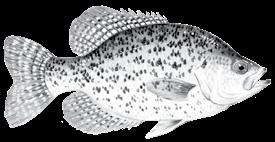
Catfish are good on fresh cut bait and punch bait.
BENBROOK: Water stained; 85 degrees; 3.03’ low. Largemouth bass are fair on crankbiats.
White bass are fair on spoons and roadrunners. Crappie are fair on minnows. Catfish are good on shad, minnows and spoons.
BOB SANDLIN: Water stained; 85 degrees; 0.28’ low. Largemouth bass are fair on chatter baiats, worms and jigs. Crappie are fair on small minnows. White bass are good on slabs. Catfish are fair on cheese bait. chatterbaits, worms, and jigs.
BRAUNIG: Water lightly stained, 92 degrees. Redfish are good on live tilapia, crawfish and frozen shrimp. Catfish are slow.
BRIDGEPORT: Water clear; 87 degrees; 10.13’ low.
Largemouth bass are fair on crankbaits. White bass are fair to good on slabs. Crappie are good on minnows and jigs. Catfish are fair on punch bait.
BROWNWOOD: Water lightly stained; 87-89 degrees; 6.11’ low. Largemouth bass are good on shaky heads, crankbaits and soft plastic worms. Crappie are slow. White bass are fair on jigs and minnows. Catfish are fair on perch and cut bait.
BUCHANAN: Water lightly stained; 86-90 degrees; 19.88’ low. Largemouth bass are fair to good on live bait and trolling ½-ounce jigs.
CADDO: Water stained; 85 degrees; 0.61’ high. Largemouth bass are fair to good on lipless
crankbaits, Texas rigs and topwaters.
CALAVERAS: Water lightly stained, 89 degrees. Redfish are good on live perch, live tilapia, frozen shrimp and silver spoons. Catfish are good on live bait and tilapia.
CANYON: Water clear; 89 degrees; 14.60’ low. Largemouth bass are fair on spinner baits and top-waters.
CEDAR CREEK: Water stained; 85-88 degrees; 1.80’ low. Largemouth bass are fair to good on Carolina rigs. Crappie are good on minnows. White bass and hybrids are excellent trolling hellbenders and pet spoons.
CHOKE CANYON: Water stained; 88 degrees; 25.10’ low. Largemouth bass are slow. Crappie are fair on minnows. Catfish are slow.
COLEMAN: Water stained; 85-87 degrees; 6.93’ low.
Largemouth bass are fair on soft plastics. Hybrid striped bass are fair on lipless crankbaits and top-waters. Crappie are slow.
CONROE: Water stained; 91 degrees; 0.89’ low. Largemouth bass are fair on Texas-rigged worms, creatures and wacky worms. Hybrid striped bass are fair trolling pet spoons and jigging slabs. Crappie are fair on jigs. Catfish are good on prepared baits, liver, shrimp and punch bait.
COOPER: Water lightly stained; 87 degrees; 0.5’ high. Crappie are excellent on jigs. White bass are good on artificials. Catfish are good on cut shad.
CORPUS CHRISTI: Water stained; 87 degrees; 5.21’ low. Largemouth bass are slow. White bass are good on jigs and live minnows. Catfish are good on cut bait and cheese bait.
CYPRESS SPRINGS: Water stained; 87 degrees; 0.14’ low.
Largemouth bass are fair on plastic worms and jigs. Crappie are fair on small minnows. White bass are good on slabs. Catfish are fair on cheese bait.
EAGLE MOUNTAIN: Water lightly stained; 86 degrees; 6.04’ low. Largemouth bass are fair on crankbaits. White bass are good on slabs with teaser flies. Crappie are fair on jigs with white/ chartreuse color combinations.
Catfish are good on punch bait.
FALCON: Water stained; 85-89 degrees; 41.01’ low. Largemouth bass are good on soft plastics and shad crankbaits. Catfish are fair on cut bait, shad, shrimp and chicken liver.
FAYETTE: Water stained; 90 degrees. Largemouth bass are fair on drop shots and Carolinaor Texas-rigged soft plastics. Catfish are good on cut bait.
FORK: Water stained; 87-88 degrees; 0.67 feet below pool. Largemouth bass are fair on chatter baits, spinner baits, shaky heads and Carolina rigs. Crappie are fair to good on minnows.
FT. PHANTOM HILL: Water stained; 87-89 degrees; 4.76’ low. Largemouth bass are fair on top-waters. Hybrid striped bass are good on crankbaits. Blue catfish are fair drifting live and cut shad.
GRANBURY: Water lightly stained; 86-92 degrees; 0.38’ low. Largemouth bass are fair on soft plastics, spinner baits and crankbaits. Striped bass are good on live shad and down-rigged jigs with curly trailers. White bass are slow to fair on slabs. Crappie are good on jigs and small minnows. Catfish are slow.
GRANGER: Water lightly stained; 84 degrees; 1.10’ low. Largemouth bass are slow. Crappie are good on jigs tipped with crappie nibbles. White bass are fair on slab spoons. Blue catfish are good drifting shad.
GRAPEVINE: Water clear; 85-87 degrees; 2.07’ low. Largemouth bass are slow. White bass are good on shad imitation lures.
GREENBELT: Water stained; 80 degrees; 44.69’ low. Largemouth bass are good on minnows and worms. Crappie are slow. White bass are slow. Catfish are fair on cut bait and live bait. Catfish are good on cut bait and cheese bait.
HOUSTON COUNTY: Water clear; 88-91 degrees; 0.90’ low. Largemouth bass are slow. Crappie are fair on minnows.
HUBBARD CREEK: Water stained; 85-88 degrees; 9.72’ low. White bass are fair on slabs. Crappie are slow.
JACKSONVILLE: Water clear; 90-94 degrees; 0.72’ low. Largemouth bass are slow. Catfish are slow.
JOE POOL: Water clear; 90 degrees; 0.39’ low. Largemouth bass are slow to fair on crankbaits and shaky heads. Catfish are fair on prepared baits.
LAKE O’ THE PINES: Water stained; 86 degrees; 1.37’ high. Largemouth bass are fair at night on chatter baits, worms and jigs. Crappie are fair on minnows. Catfish are good on cheese bait.
LAVON: Water lightly stained; 87 degrees; 1.62’ low. Largemouth bass are slow to fair on Carolina rigs. White bass are good on chartreuse and white slabs. Crappie are slow. Catfish are good on cut shad and bluegill.
LBJ: Water stained; 92 degrees; 0.18’ low. Largemouth bass are fair on top-waters and shallow crankbaits early.
Crappie are fair on minnows and chartreuse jigs. Catfish are good on punch bait.
LEWISVILLE: Water lightly stained; 87-90 degrees; 1.53’ low. White bass are fair on slabs, jigs and live bait. Crappie are fair on minnows and jigs. Catfish are fair drifting cut shad or chicken breasts.
LIMESTONE: Water clear; 89-94 degrees; 1.58’ low. Largemouth bass are slow. White bass are good on silver jigging spoons, crankbaits and swimbaits. Crappie are good on minnows. Catfish are good on cut bait and minnows.
LIVINGSTON: Water stained; 85 degrees; 1.14’ low. Largemouth bass are slow. White bass are excellent jigging slabs. Crappie are slow. Catfish are fair on cut bait and prepared baits.
MARTIN CREEK: Water lightly stained; 96 degrees; 1.54’ low. Largemouth bass are slow. Crappie are fair on minnows and shad-colored jigs.
MEREDITH: Water stained; 83 degrees; 43.38’ low. Largemouth bass are good on minnows and artificials. Crappie are fair on jigs and minnows. White bass are good on curly tailed grubs. Walleye are good on minnows, grubs and crankbaits. Catfish are good on crawlers, minnows, chicken liver and frozen shad.
MILLERS CREEK: Water stained; 85 degrees; 7.38’ low. Largemouth bass are slow. White bass are fair trolling slabs. Blue and channel catfish are fair on juglines.
NACOGDOCHES: Water clear; 87-90 degrees; 1.51’ low. Largemouth bass are fair on spinner baits and soft plastics. Crappie fishing are fair on minnows.
NACONICHE: Water lightly stained; 90 degrees; 1.00’ low. Largemouth bass are fair shad imitations and Texas-rigged worms. Catfish are slow.
NASWORTHY: Water lightly stained; 84 degrees; 1.04’ low. Largemouth bass are fair on black frogs and soft plastics in the reeds. Crappie are good on chartreuse jigs. Catfish are fair to good on cut bait and stink bait.
NAVARRO MILLS: Water stained; 86 degrees; 0.57’ low. Largemouth bass are slow. Crappie are fair on jigs tipped with minnows.
O.H. IVIE: Water stained; 85-89 degrees; 26.51’ low. Largemouth bass are fair on soft plastics. White bass are good on live bait. Crappie are good on minnows and jigs.
OAK CREEK: Water lightly stained; 87 degrees; 13.64’ low. Largemouth bass are good on soft plastics. White bass are
good on gold spinner baits. Catfish are good on juglines baited with cut shad or perch.
PALESTINE: Water stained; 90 degrees; 0.79’ low. Largemouth bass are slow. Crappie are slow. Catfish are excellent on cut or live shad.
POSSUM KINGDOM: Water clear; 86-90 degrees; 0.54’ low. Largemouth bass are slow. White bass are fair on small slabs and spoons. Striped bass are good on live bait and trolling jigs. Catfish are fair on cut shad and punch bait.

PROCTOR: Water stained; 86-89 degrees; 11.02’ low.
Largemouth bass are slow. Crappie are fair on minnows Catfish are good on cheese bait.
RAY HUBBARD: Water lightly stained; 86-89 degrees; 1.48’ low. White bass are good on small top-waters and inline spinners. Crappie are fair on jigs and minnows. Catfish are fair on prepared baits.
RAY ROBERTS: Water clear; 87 degrees; 0.66’ low. Largemouth bass are fair to good on top-waters and drop shots. White bass are good on slabs and spoons. Crappie are fair on minnows.
RICHLAND
CHAMBERS: Water clear; 8789 degrees; 1.16’ low. Largemouth bass are slow. Hybrid striped bass are good on live gizzard shad. White bass are slow. Blue and channel catfish are fair on shad and punch bait.
SAM RAYBURN: Water lightly stained; 88-90 degrees; 2.69’ low. Largemouth bass are good on top-waters, crankbaits and Carolina rigs. Crappie are fair on minnows and jigs. White bass are fair on jigs and crankbaits.
SOMERVILLE: Water clear; 89 degrees; 1.48’ low. Largemouth bass are slow. Crappie are fair on minnows. White bass are fair trolling pet spoons. Catfish are good on juglines baited with shad or cut bait.
SPENCE: Water stained; 86 degrees. 46.11’ low. Largemouth bass are fair on top-waters and plastic worms. White bass are fair on jigs and spoons. Catfish are fair on juglines baited with cut shad.
STILLHOUSE HOLLOW: Water lightly stained; 88 degrees; 15.89’ low. Largemouth bass are fair on soft plastics and flukes. White bass are fair downrigging slabs.
TAWAKONI: Water lightly stained; 85 degrees; 0.16’ low. Largemouth bass are slow. White bass and striped bass are good on live bait. Crappie are fair on minnows. Catfish are very good on prepared baits.
TEXANA: Water stained; 85 degrees; 2.55’ low. Largemouth bass are fair on soft plastics. Crappie are fair on minnows.
n Guide reports Page 14
n Saltwater reports Page 19
Catfish are good on prepared baits.
TEXOMA: Water stained; 85 degrees; 1.57’ high. Largemouth and smallmouth bass are good on live shad. Striped bass are fair to good on live shad, top-waters and slabs. Crappie are fair on hair jigs and minnows. Catfish are fair on prepared baits and cut shad.
TOLEDO BEND: Water stained; 86-90 degrees; 2.17’ low. Largemouth bass are good on top-waters, flutter spoons, Texas rigs and crankbaits. Crappie are fair on small minnows. White bass are fair on lipless crankbaits.
TRAVIS: Water lightly stained; 91 degrees; 45.54’ low. Largemouth bass are fair good on top-waters and swimbaits early, and Texas rigs later in the day.
TWIN BUTTES: Water stained. 87-91 degrees; 27.30’ low. White bass are slow. Crappie are slow. Channel catfish are fair on cheese bait.
TYLER: Water stained; 90 degrees; 0.84’ low. Largemouth bass are slow. Crappie are fair on minnows. Catfish are good on nightcrawlers and stink bait.
WACO: Water stained; 85 degrees; 9.01’ low. Largemouth bass are slow. Crappie are good on minnows.
WALTER E. LONG: Water stained; 87 degrees; 1.00’ high. Largemouth bass are slow. Bluegill are fair on worms. Catfish are slow.
WHITNEY: Water lightly stained; 85 degrees; 5.98’ low. Largemouth bass are good on soft plastics. Striped bass are fair to good on live bait and cut bait.
WORTH: Water lightly stained; 86 degrees; 2.60’ low. Largemouth bass are fair on crankbaits. White bass are good on slabs with teaser flies. Crappie are fair on jigs with white color combinations. Channel catfish are good on punch bait.
WRIGHT PATMAN: Water stained; 95 degrees; 2.12’ high. Largemouth bass are slow. Crappie are fair to good on minnows. White bass are slow. Catfish are slow.
—TPWD






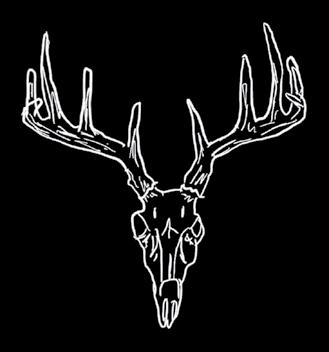



In February, a Karnes County game warden received a phone call from a pipeline worker who found a large amount of snow geese that were thrown to waste. The complainant sent the warden some photos and the location. An Atascosa County warden photographed 46 geese that were not cleaned and left to waste. The landowner divulged that his son, along with friends, recently hunted geese on another property. The wardens obtained confessions from the group, who admitted to shooting 122 geese during the conservation season, then leaving 46 of them to waste. While game wardens issued citations, the guilty parties posted the consequences of their antics on social media. Citations and civil restitution fees were issued and paid in full.
Multiple reports were received of two men spear-fishing and keeping a large quantity of fish on Brushy Creek in Williamson County. A game warden contacted the two men as they were returning to their vehicle. The men did not have spears in their possession. With the assistance of another warden who was translating, the wardens learned that once the reporting party threatened to call the police, the

While patrolling in the Canadian River OHV (off-highway vehicle) area in Potter County, a game warden was notified by the sheriff’s office about a multi-OHV head-on crash with serious injuries. The warden responded and located the OHVs involved in the crash on a small, isolated trail near the Canadian River. As the first responder, the warden provided medical treatment/assessments to two adult female passengers. Both sustained serious head and neck injuries, as well as multiple compound fractures to their legs. EMS was notified of the isolated location of the crash, and the warden guided the emergency medical helicopter to the scene while continuing to provide medical treatment to the two injured females. The warden then assisted in carrying carry one of the injured female passengers to the helicopter due the isolated, rough terrain. Both women were transported to a hospital in Amarillo. One of the uninjured adult male drivers had one pending misdemeanor arrest warrant out of Potter County and was arrested. Both female passengers are expected to survive their injuries.
men let the fish they had speared go and stashed their spears in the woods. When walking to retrieve the spears, the men attempted to split up in the woods, one walking slowly and one going ahead. The warden ran and caught the lead man with two spears and a bag full of speared and gutted fish. Neither man had a fishing license. The wardens located about 70 bluegill, Rio Grande cichlids, freshwater drum, undersized largemouth bass and channel catfish. All of the fish were speared.
THREE DROWNINGS ON LEWISVILLE
Over the holiday week, three people drowned on Lewsiville Lake. The body of a 19-year-old man was retrieved from the lake after going swimming with friends at the Highland Village swim beach and not resurfacing. Game wardens and fire departments assisted in the search. On July 4, a 45-year-old man went out on a pontoon boat with friends. They anchored and went swimming in the middle of the lake. The man reportedly went underwater and never came back up. His body was later recovered near the north end
of the lake. The third victim was swimming near a buoy at a public beach area and went under. The body was later recovered.
DROWNING ON STILLHOUSE, MAN
DISCOVERED AFTER SEARCH
A man drowned in Stillhouse Hollow Reservoir over the Fourth of July weekend. The body of Rohel Ramirez Gonzalez, 42, of Killeen, was located on the bank area of Union Grove Park and was recovered by the Bell County Sheriff’s Department and TPWD. Law enforcement officials used tech-
SPONSORED BY:



nology to search for the man, who had been boating with family and friends when he was separated from the boat. The victim was unable to stay above the water and drowned. Officials used side-scan sonar to search an area about a quarter-mile square that was 35-50 feet deep, but thick hydrilla and vegetation hindered search efforts.
HEART ATTACK ON FISHING BOAT
The Coast Guard evacuated a 52-year-old man from a fishing vessel 15 miles south of Port O’Connor. A call reported a crewmember aboard a fishing vessel was experiencing symptoms of a heart attack. A response boat was launched, arrived on scene, bought the man aboard and transported him to awaiting emergency medical services at Clark’s Fishing Pier. The man was transferred to a local hospital and was reported to be in stable condition.
REPORT ILLEGAL HUNTING AND FISHING ACTIVITY FOR A REWARD OF UP TO $1,000. CALL OPERATION GAME THIEF AT (800) 792-4263






APACHE RIFLE WORKS COMFORT, TX
BUCKS & DOES SAN ANTONIO, TX
CARTERS COUNTRY SPRING, TX HOUSTON, TX PASADENA, TX
FIELD AND STREAM SAN ANGELO, TX
GLICK TWINS PHARR, TX

NEW FOR 2023
The Wilderness Series® Ridge is designed for the serious hunter. Those who brave the elements and need an accurate rifle that can keep up, without the extravagant price tag. Now, we’ve added a carbon fiber barrel. We can tell you the weight savings will gain you a few extra miles on foot. Or that the increased accuracy will add to your confidence. But, there’s also nothing wrong with simply one-upping your buddies.

HOFFPAUIR FARM & RANCH LAMPASAS, TX
LOS CAZADORES STONEWALL, TX PEARSALL, TX
MCBRIDES AUSTIN, TX
NAGELS GUN SHOP SAN ANTONIO, TX
NATIVE OUTDOORS HEATH, TX
PORTERS FLINT, TX
PRACO PAWN WACO, TX
SHARP SHOOTERS LUBBOCK, TX
SUPERIOR PAWN LONGVIEW, TX
TEXAS GUN EXPERIENCE GRAPEVINE, TX
THE OUTDOORSMAN SAN ANGELO, TX
VICTIORIA ALL SPORTS VICTORIA, TX
WILKERSONS GUNS BOERNE, TX



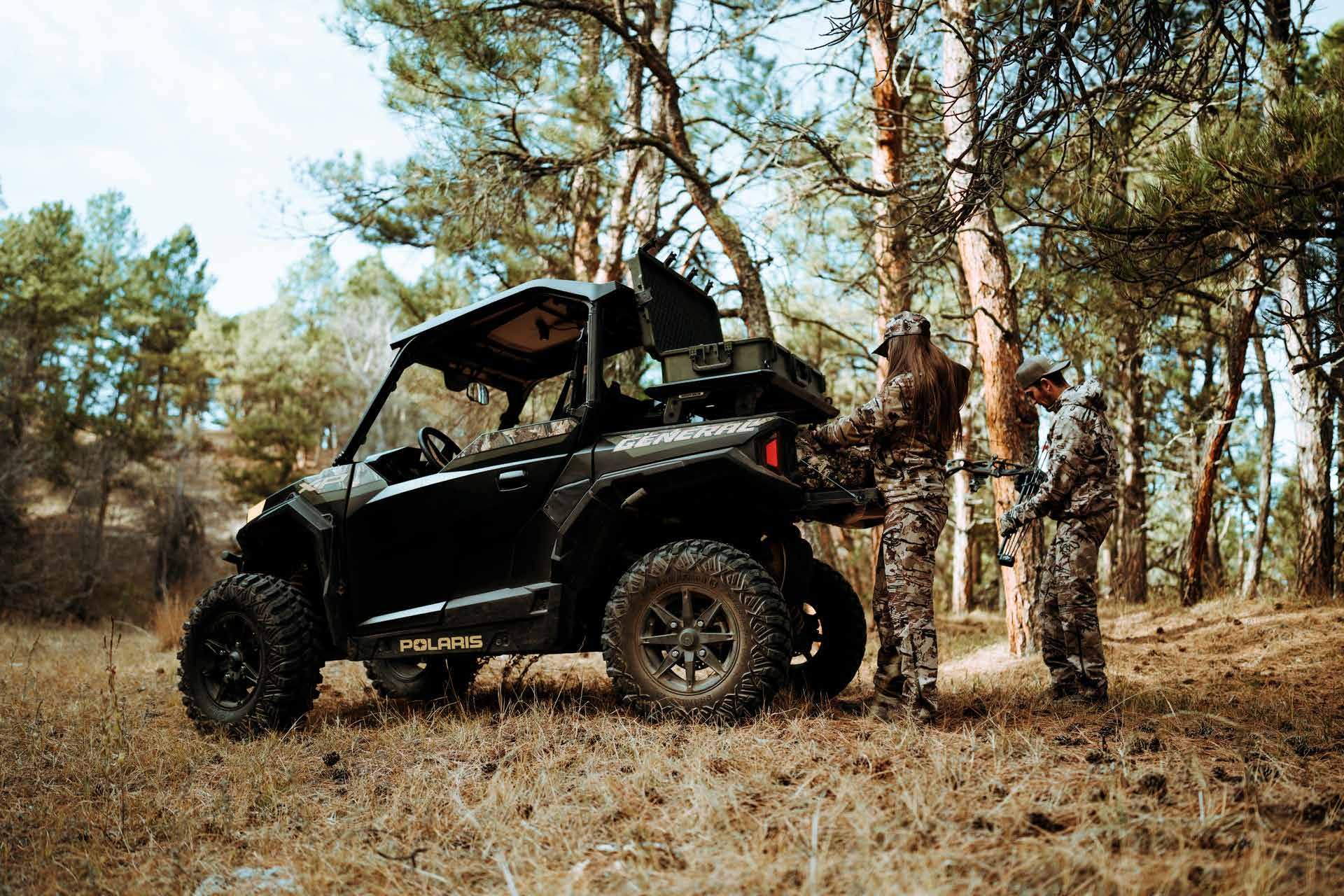






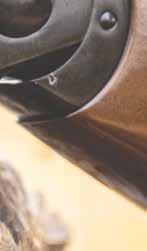

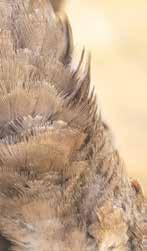
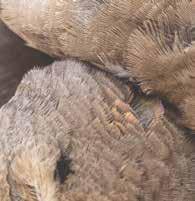






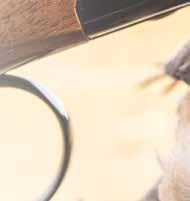




















































For more than a decade, predator hunters have been adopting thermal optics and using the cover of darkness to their advantage. Producing a real-time image based on heat (instead of light), thermal imaging is one of the most powerful technologies in the optics industry. Until recently, high prices made thermal unattainable for many hunters, but today, most of us know someone who owns a thermal weapon sight.
As pricing in the thermal optics category becomes more approachable, InfiRay Outdoor is leading the way by improving product quality and enriching the user experience, providing a hardto-ignore combination of value and performance with their full line of products.
InfiRay Outdoor is a new name to hunters in the United States, but a global leader in the production of thermal imaging sensors. The company holds more than 100 patents and is vertically integrated so it can control every step of design and production, unlike its competitors.
iRayUSA, the Texas-based U.S. distributor of InfiRay Outdoor, takes product support one step further with an industry-best five-year warranty and a five-day promise on any service that may be required.
Whether you need to snuff out coyotes that are hurting your game population, you want to be a more effective hog hunter or you just want the superhuman ability to see in the dark on the ranch, InfiRay Outdoor has a thermal optic for you. Check out irayusa.com to learn more about their wide range of thermal scopes and handheld monocular products.


INFIRAY OUTDOOR
☎ (800) 769-7125
IRAYUSA.COM

With industry-leading technology, the strongest warranty in thermal optics, and years of field experience, we develop, build, and sell the best thermal products on the market—the products we use personally. We’re night hunters ourselves. When we’re not developing new products or pulling orders, we’re out pulling triggers.

We’ve all pondered what Heaven might look like. But Al Johnson is pretty sure he knows. It’s a place without concrete and traffic and commotion. A place that helps you find balance and peace.

When Al told us he’d found just such a place for sale, all of us here at Heritage Land Bank moved quickly to find him the perfect loan A loan that worked within his budget, so the Johnson family could make this little bit of heaven their own

So now, when Al wants to meet, we ’ re inclined to talk at his place rather than the office. Because, as Al told us, being out on the land is good for the soul.




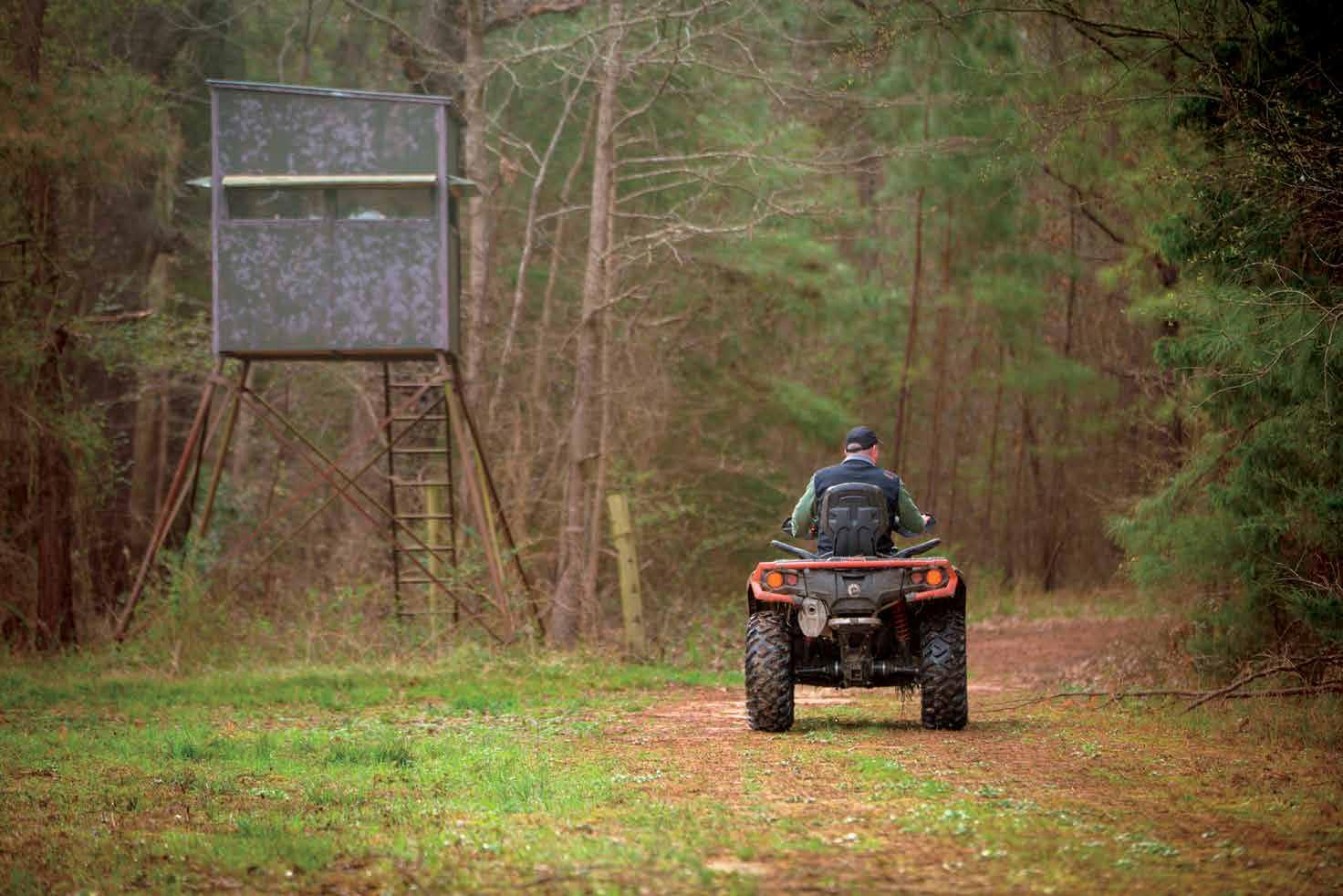
Blake Barnett, host of Trailing the Hunter’s Moon, just returned from a Namibian safari using the Marlin 1895 Guide Model rifle, chambered in .4570.

“We hunted the Nyae Nyae Conservancy, the home of the Sand Tribe, which is the original indigenous people of the area,” Barnett said. “It was about 2 million acres.”
Barnett hunted Cape buffalo and plains game with Dzombo Hunting Safaris, all using the Marlin 1895, although Hornady developed a special .45-70 load for buffalo hunting.


“The rifle performed excellently, I shot animals out to 200 yards,” he said. The Model 1895 is definitely an MOA gun — dead on at 100 yards, and the lever-action is one of the fastest reloading rifles ever. It’s great for follow-up shots.”

For the hunt, Barnett used a Trijicon Accupoint 1-6x24 riflescope.
“The entire area had real thick cover,” he said. “Low power was a necessity. I shot the buffalo at 20 yards.”

Projects for the Sand Tribe members were another reason for the hunt.

“Dzombo has a number of projects for the local people, including new schools and humanitarian projects,” Barnett said. “They are all funded by hunters. And it was important to see the Sand culture and learn about it — many of them still lead a nomadic life.”
Ruger purchased the Marlin brand in 2020, and makes the Marlin 1895 in three models. The Guide Model has a blue finish and a wood stock, while the others models are stainless steel. It utilizes the same time-honored design as the traditional 1895, combined with Ruger’s modern manufacturing methods and reputation for producing high-quality, reliable firearms.
All of the hunts were filmed, to be aired in 2024 in a multi-part series on Trailing the Hunter’s Moon, on the Pursuit Channel.
The Ruger American ® Rifle is a 100% American-Made firearm that offers outstanding performance at an affordable price. It combines Ruger’s famous rugged reliability with all of the award-winning ingenuity featured in so many Ruger products. With seven different model variations and 19 calibers, you’re sure to find the perfect Ruger American® Rifle for your next hunt.







The acquisition, ownership, possession and use of firearms are heavily regulated. Some models may not be legally available in your state or locale. Whatever your purpose for lawfully acquiring a firearm – know the law, get trained and shoot safely.

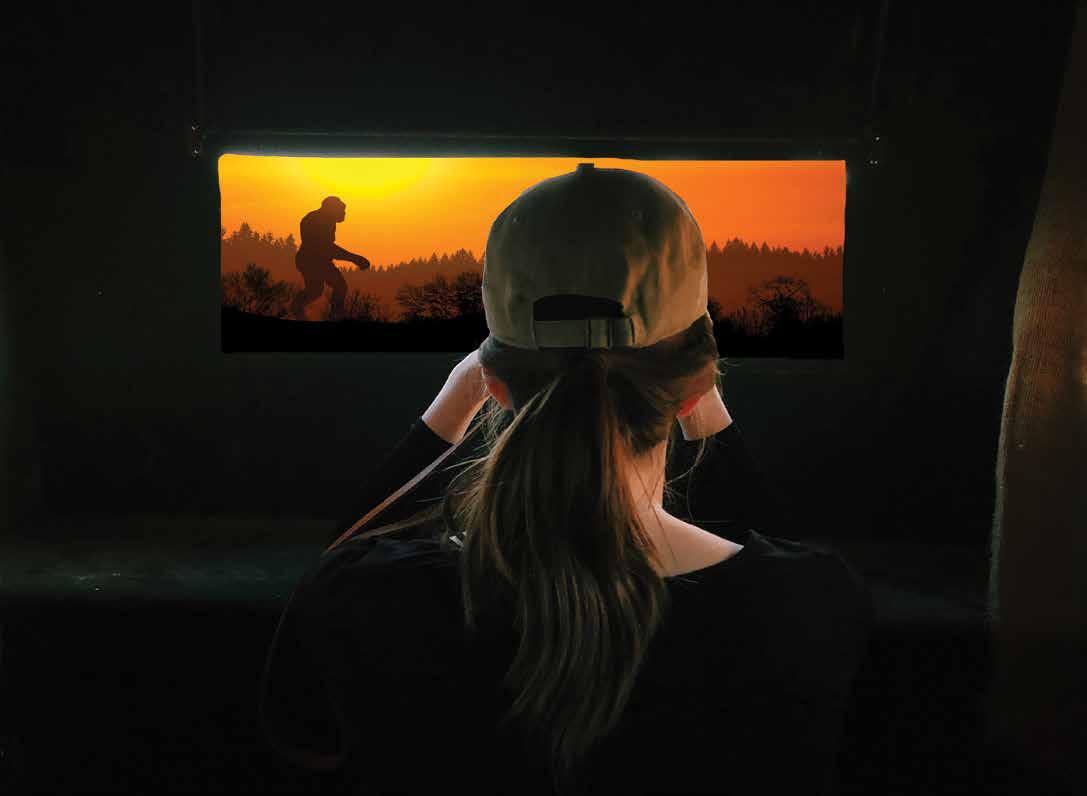
The day is coming soon. You envision taking the shot and it’s true. Then, you send your dog to do what he or she is trained to do. When he or she brings the bird back to you — maybe without you even having to get up from your chair — it brings a feeling of both pride and gratitude, whether the dog is sprinting or lumbering back to you.
Bringing the dog on the opening-day dove hunt is the goal, but it’s not without its challenges. Everything points to another hot opener, and concerns of keeping the dog cool, and more importantly, alive, have to be considered.

For many hunters, the opener is spent at a site where the hunter hasn’t been, whether with an outfitter or with friends. You might find yourself looking at a wide-open field, with no trees for shade and no ponds where the dog can take a dip.
There are plenty of attempted solutions, but a large, separate cooler filled with water (some add ice) will have most dogs willing to jump in during a break in the action. Hunting early or late helps. Some hunters set up a canopy for artificial shade. Finally, when it’s super hot, and the dog may be getting up in years, is somewhat out of shape and even a little bit overweight, some leave the dog at home, recognizing later in the month may be a better time for the dog to spend hours in the sun.
Dove numbers look great for the season, and the hunters and their dogs can’t wait. But watch for excessive panting or a glassy-eyed look from your best friend, and be ready to get to the cool truck quickly — even if the birds are still flying.

An outdoor expo is coming to Llano as part of a weekend-long celebration. The Hill Country Expo will take place Sept. 29-Oct. 1 as part of LlanoMusicFest. com.


Organizer Alan Powers said the JLK Center will be full of activities, including the Tyler Magnus Team Roping and Ranch Rodeo and its 2,500 participants, which will take place under the same roof.
The JLK Center includes a 25,000-square-foot exhibit center, which will host the Expo. The best news? All of the events at the JLK Center are free, while concertgoer tickets begin at $35.
Across the street and along the Llano River at Robinson City Park is the home of the Music Fest, which will showcase Roger Creager, ShinyRibs, Kin Faux, Thomas Michael Riley, The Wilder Blue, Tejas Brothers, Davin James, Nathan Colt Young, Calamity Janes and Joe Forlini.
“The Outdoor Expo will be everything outdoors, including hunting, fishing and western exhibits,” Powers said. “All of the events are tied together to bring people to Llano to experience what the outdoors and the Hill Country has to offer.”
Powers said the Exotic Wildlife Association will be on hand with mounts of native and exotic animals. Interested exhibitors are asked to contact Anita Hilton at anitahiltons@ gmail.com or (810) 217-4633. Booths are 12x12 and cost $250 for the entire show. For festival ticket options and further information, go to LlanoMusicFest.com
Hill Country Expo

Fri., Sept. 29 Noon-5:30 p.m.
Sat., Sept. 30 9 a.m.-5:30 p.m.
Sun., Oct. 1 9 a.m. to Noon
Llano Texas Music Fest

Fri., Sept. 29 3 p.m.-11:30 p.m.
Sat., Sept. 30 3 p.m.-11:30 p.m.
LLANOMUSICFEST.COM
LLANOMUSICFEST.COM

You could compare Firebird detonating targets to the difference between modern-day brass cartridges and black powder, cap and ball.
The Firebird instant hit recognition signaling device is a self-contained, waterresistant pyrotechnic target.








Just peel the sticker and fix the target to a hard, flat surface. Shoot from a minimum of 50 feet with airguns capable of 850fps, .22 subsonic or an archery arrow and receive instant feedback when your aim is true. With standard rimfire, centerfire, shotgun and crossbow bolts, an even more intense response comes in return.
Our Firebird biodegradable casings mean little to no cleanup, but plenty of noise.
• No mixing to prep
• Reliable performance
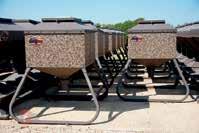
• No cleanup afterward
Of course, there’s nothing wrong with the old powder, cap and ball process — if you’re a history buff.
FIREBIRD TARGETS

☎ (844) 544-4832
FIREBIRDTARGETS.COM

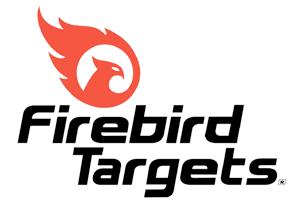





ce.



Perched atop a mesa just west of Fort Worth, Greystone Castle is a sight to behold. With four turrets peeking above the tree line, this majestic sight is one to be remembered. From its awardwinning wingshooting program to trophy whitetail and exotics, world-class bass fishing and our National Champion Sporting Clays instructor, there is something for everyone at Greystone Castle.
The Gold Medal whitetail deer program offers an all-inclusive package based on the opportunity to hunt the opening weekend of season. Not restricted by score, it is an exclusive chance to hunt for the whitetail of your dreams. This year’s results include a giant 493-inch deer taken by rifle.

As evidenced by being named the Orvis 2015 Wingshooting Lodge of the Year, Greystone has mastered the art of bird hunting. The ever-popular mixed bag hunt includes quail, pheasant, chukar and Hungarian partridge. This upland walking hunt allows guests to experience great pointing dogs working over rolling terrain specially farmed for optimal bird habitat. The European pheasant hunt is a great way to get lots of shooting action and watch Labradors do what they do best — retrieve birds! The mallard hunts offer a great chance to hone your skills over water while the fast-flying dove hunts offer an adrenaline rush every hunter craves.
If you are looking for something different, you will find it in the exotic pasture full of animals from around the world. Species from Africa, Asia, South America, and Europe roam the Texas plains and thrive in the southern climate. Breeding herds of axis deer, aoudad, blackbuck antelope, sika and fallow deer mean there are plenty of trophies to be taken.
For those looking to relax and enjoy the water, Greystone offers more than 120 acres of stocked bass lakes. From small private lakes to the 80-acre Thurber Lake, every type of fishing opportunity exists. From fly-fishing to spincasters or simple hook and bobbers, there is a method for everyone. Kayaks and paddleboards let you go off on your own adventure or you can jump on a pontoon boat to sneak to the honey holes.
Two championship sporting clays courses, two 5-stands, a training course and a wobble deck challenge every level of shooter. Our new 400yard rifle and pistol range offers steel targets at a variety of distances. Hone your skills on the new archery course featuring a tri-level static range and a 3-D walking course. Or just enjoy the scenic hiking and biking trails.
What appeals to Greystone visitors is its topof-the-line accommodations and gourmet meals. Guests enjoy 26 private rooms, gourmet dining from an executive chef, conference facilities and a swimming pool with a hot tub and a steam room. Along with this is the 2,600 square-foot pavilion facility with custom bar, large seating areas, 65-inch TVs, carved limestone fireplace, Laser Shot, billiards and an overlook terrace with a custom outdoor fire pit.
The ownership and staff are dedicated to creating one of the finest sporting experiences found anywhere in the world. Long-term habitat improvements and wildlife management has made Greystone an extraordinary hunting venue.
GREYSTONE CASTLE
☎ (800) 399-3006
GREYSTONECASTLE.COM



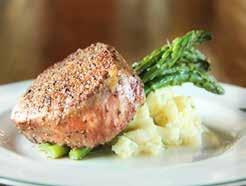
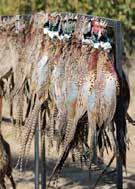




2,118± acres | $9,520,410 | Brown County, Texas
An extraordinary offering, complete with exceptional water features, fantastic improvements, including guest accommodations, outstanding scenery, and four-season recreation opportunities. Improvements include a beautiful two-story home, three well-built guest cabins, an equipment shop, and a storage barn. Multiple large ponds are dispersed throughout the ranch and Turkey Creek winds its way through the eastern portions of the property.
This region has bountiful populations of wildlife which include whitetail deer, feral hogs, some exotics, and plenty of turkey. The LN Ranch is well set up for deer hunting with seven hunting blinds strategically located with fifteen wildlife feeders. The larger ponds are stocked and fishing is reported to be very good.

797.5± acres | $15,112,625 | Gonzales & DeWitt Counties, Texas
This nearly 800± acre ranch is an outstanding property with almost two full miles of Guadalupe River Frontage. This one-of-a-kind property has improved grass pastures, outstanding river bottom land that is lined with mature pecan and oak trees, and a well developed pecan orchard. Highly improved with a two story main house with an attached apartment, a pool, a matching main barn, a small horse barn with a tack room and six outdoor stalls, and a greenhouse. The ranch has excellent water features including almost 2 miles of Guadalupe River Frontage, three ponds, five windmills, six wells, and 13 rain collection tanks of various sizes. Perfect for horseback riding, ATVs, hunting, and the river can be floated at certain times of the year.
200± acres | $6,250,000 | Blanco County, Texas


A very unique property located in the highly desirable northwest portion of Blanco County near Fredericksburg, Lake LBJ, and Horseshoe Bay. Ranch improvements include a 7,500 sq. ft. insulated barn/shop with concrete floors, electricity, and water. The barn also has a 3,500 sq. ft. awning with horse stalls under it. A 1-bedroom, 1-bath hunter’s cabin is located nearby. Water features include two ponds and an excellent water well that provides water to the barn/shop and several water troughs scattered throughout the ranch. The South Arrow Ranch is an excellent hunting property for white-tail deer, turkey, dove, quail, and wild hogs.

4,309.52± acres | $4,675,830 | Dickens amd Kent Counties, Texas
A very desirable ranch offering livestock and hunting/recreation opportunities. The terrain on the ranch is described as gently rolling to level over much of the property. The Little Red Mud Creek traverses the property offering topographic relief and exceptional wildlife habitat. Several fingers of the creek extend outwards into the ranch. Well watered for livestock and wildlife with 2 electric water wells being used to pipe water to drinking troughs throughout the property. Several dams have been constructed on the ranch and there are five or six nice ponds. This area produces quality whitetail. $1,085 per acre
9,400± acres | $28,153,000 | Shackelford Co., TX



A one-of-a-kind property with great turf, water, minerals, immaculate improvements, convenient location, and unequaled hunting. The property is considered to be very well watered with scattered ponds throughout the ranch. Located in one of the top hunting counties in Texas. There is a 200-acre high-fenced pasture stocked with deer. $2,995 per acre.
9,871.26± Total acres | $9,250,000 | Catron Co., NM

6,628.91± Deeded • 2,882.35± NM St. Lease • 360 BLM
A stunning west-central New Mexico property with a rich history, well-conserved land, and quality improvements. Well watered with 7 wells (1 shared), 14 dirt ponds, 19 drinkers, 9 storage tanks, and a 2-acre pond. Amazing hunting opportunities for elk, mule deer, pronghorn, bear and turkey.
688.2± acres | $3,165,720 | Stephens County, Texas

The topography is level to rolling. The property is drained by several seasonal tributaries and drainages of nearby Battle Creek. The ranch has an excellent turf of native grasses with live oak, hackberry, and other hardwoods scattered throughout. The ranch represents a tremendous opportunity to acquire a quality recreational property with upside potential.
4,000± acres | $12,600,000 | Shackelford, Co., TX


A very well manicured and managed ranch centrally located in Shackelford Co., Texas. One of the finest quail hunting properties in the county along with pastures that have been cleared to maximize cattle carrying capacity. Scattered ponds along with seasonal creeks provide ample water. This area provides some of the finest deer hunting in the county with very little hunting pressure. $3,150 per acre.
2,582± acres | $4,518,500 | King County, Texas

The property is accessed off of U.S. Highway 83 which borders the property’s west fence line for 1.4 miles. The 6666 Ranch borders the south fence line for 3.2 miles. The terrain exhibits good relief defined by a rolling topography while a portion of the southeast corner is a picturesque broken country. $1,750 per acre.
1,920± acres | $9,504,000 | Shackelford, Co., TX
Exceptional offering with level to rolling terrain, several shallow seasonal drainages and an excellent turf of native grasses, primarily of bluestem. Includes two game food plots. Improvements include a limestone ranch house and an adjacent 30x50 metal barn with a 20-foot overhang. Excellent hunting with quality white-tail, hogs, waterfowl, quail, and dove.
3,034± acres | $4,020,076 | Hall County, Texas
Located about 12 miles northeast of Turkey, Texas. With its variety of terrain characteristics, ranging from river and creek bottoms, to upland cultivation, and a desirable mix of vegetation and aesthetic appeal, this ranch is the ideal blend of production agriculture and recreation. $1,325 per acre.
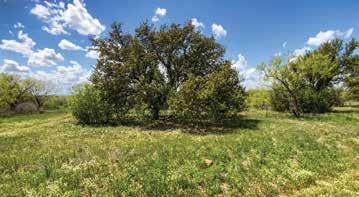
135± acres | $1,925,000 | Montague County, Texas

Beautiful recreational and livestock property featuring rolling terrain with hardwood trees and open areas of grass throughout. Very well watered with a good well, 5 ponds that provide excellent fishing, Turkey Creek, and a second all-weather creek that provides water holes in the dry season. Excellent hunting with quality white-tail deer, hogs, turkey, and dove.
$4 Billion+ Total Sales since 2016
640± acres | $992,000 | Cottle County, Texas
The majority of the ranch remains in native pasture; however, there are approximately 130 acres located on the west side of the property that are in cultivation and operated on a dryland basis. Level to broken terrain with two large tributaries to the North Wichita River extending through the native pasture of the ranch. $1,550 per acre.
Largest Contiguous Sale in the U.S. in 2016 (535,000 acres)


In 1949, Ernest Hemingway, who may be America’s most renowned author and a well-known hunter, purchased a Beretta shotgun — an SO3, serial number 5991 — which was Beretta’s top-of-the-line over-and-under at the time.
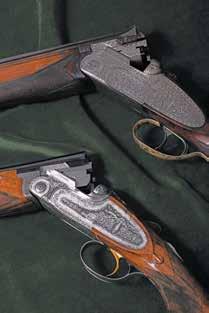
Hemingway bought the 12-gauge shotgun to shoot ducks in the Venice, Italy, area. The gun’s journey included a trip to Africa where Hemingway hunted guinea fowl and to Cuba where he hunted pigeon.
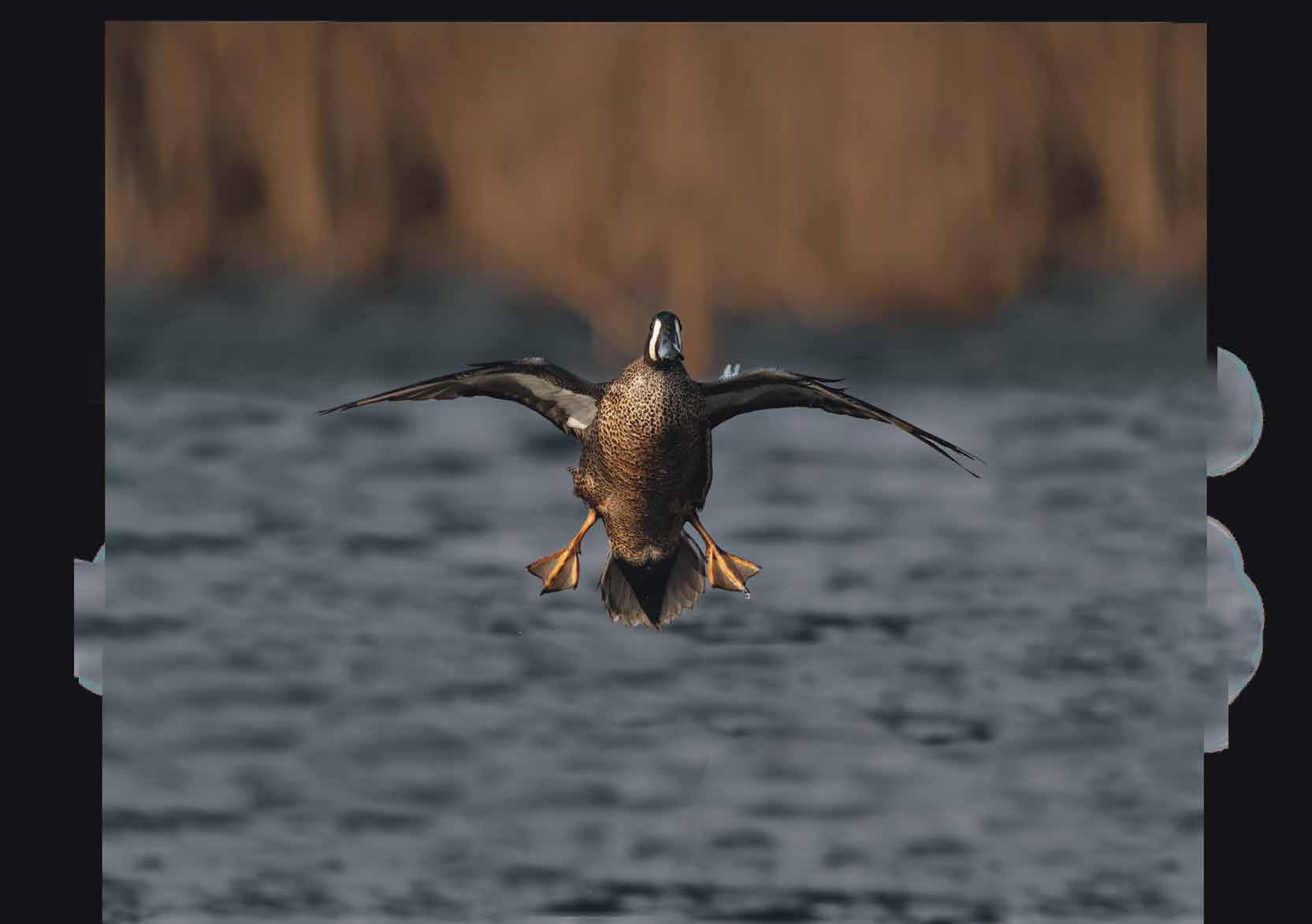
In 1963, a few years after Hemingway’s death and after spending years in Africa, the S03 was sold at auction by Abercrombie & Fitch. Beretta acquired the shotgun years later and it is currently on display at the Beretta Gallery on New York’s Madison Avenue.
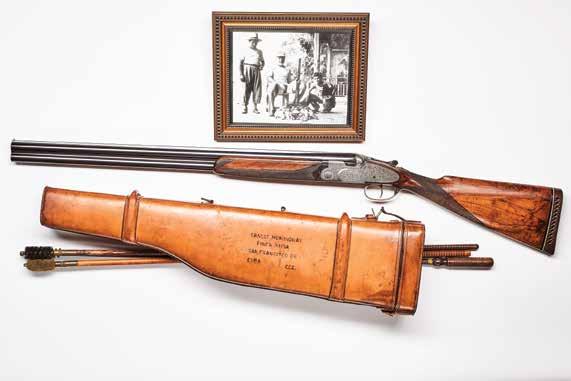
Ian Harrison, Beretta’s director of premium gun sales and the former manager of the Dallas Beretta Gallery, has designed a new shotgun in homage to Hemingway and his original Beretta gun.

“It’s an historic-type piece,” Harrison said. “Last year, I designed and built a shotgun in what is now Beretta’s top-of-theline over-and-under, the SO10. In the 1940s, the 12-gauge was the all-purpose gun used for wingshooters, but now it leans more toward the 20-gauge. The new gun is in 20 gauge with a 28-inch barrel, and it has a modernized version of the original engraving, including roses, little faces, and the historic Pietro Beretta logo
The SL3 is a distinctive shotgun within Beretta’s premium portfolio, in which design elegance meets superior Beretta technology. Beautifully crafted in Gardone Val Trompia by master gunsmiths, the SL3 features a superior locking system, an exceptional firing mechanism, and a beautiful design. Discover how craftsmanship, passion, and the pursuit of perfection lead to outstanding performance in the field.
For more information contact one of our Premium Dealers or the Beretta Galleries

Both mourning dove and white-winged dove numbers increased significantly this year. Owen Fitzsimmons, the webless migratory game bird program leader at Texas Parks and Wildlife Department, issued a report Aug. 2 after the completion of annual rural and urban dove surveys.

Mourning dove
Mourning dove numbers have ranged from a high of 37.5 million in 2016 to a low of 19.8
million in 2022. This year, the estimate is 28.3 million, a 44-percent increase from 2022 and 3 percent above the long-term average. Abundance increased in all regions of the state. White-winged dove Whitewings have continued their expansion across the state since the 1990s, and are strongly associated with urban habitat, according to the report. Estimates have ranged from a low of 6.7 million birds in 2008 to highs of 11.7 million in 2015 and this year. The estimate for 2023 represents a 20-percent increase from
last year and is 19 percent above the long-term average. About 85 percent of the birds live in urban areas.
Dove hunters, while happy with the numbers, have been around long enough to know that weather changes occurring within 10 days or so from opening day can change everything and toss any opening-weekend projections out the window. A cool front and/or a rain event tends to scatter the birds, especially the mourning dove, and can make an area expected to be a hotspot void of birds for the opener.
Fusion Thermal’s new optics make the complex seem simple. The new Avenger 55XR and Avenger 40 utilize the company’s T3 Three Button Control System, along with the KISS (Keep It Simple Stupid) menu.
“The ease of use is a big deal,” said shooter Cameron Salvaggio. “You don’t want to have to look up in the dark to see what button you’re hitting, especially when you’re hog hunting.”
What hunters will find in the new thermal series is high-end features with a “simplicity first” design.
Thermal sensors require a lot of power, and the Avenger Series has ample power with the 18650 battery design, run in parallel, providing an industry-leading, eight-hour run time.
The Avenger series utilizes aircraftgrade aluminum housing, while most other brands use plastic.
“Thermals create a lot of heat, and the aluminum housing allows it to escape,” Salvaggio said. “Plastic holds in the heat and can degrade the sensor and core over time, which negatively affects image quality and overall clarity.”
Recently at a precision rifle expo, shooters shot with all the top brands in the thermal industry. Two steel targets were set up, one at 200 yards and one at 500 yards. Both had a heating pad on the back of the target.
“Right before the night shoot started, the 500-yard target went out, so it was unheated,” Salvaggio said. “There was very little differential in heat between the air, the berm and the target.”
Each brand had their own bay to shoot, and consumers took turns going to each
bay and testing out each thermal. Out of all of the brands, the Fusion Thermal was the only brand that consumers could see and shoot the 500-yard target, Salvaggio said. All of the other brands stuck to the 200-yard target because they couldn’t see the longer, cooler target.
“One consumer, who shot an $18,000 scope, said you would think for 18K, you would be able to see the 500-yard target like you can with the Fusion Thermal,” Salvaggio said.
Angel Padilla, of Johnny’s Sport Shop in Eagle Lake, works full-time at the shop and also guides hog hunters at night with Sandy Creek Outfitters. Both sell and use the Fusion Thermal products.
“The units perform really well in humidity and fog, which a lot of other brands struggle with,” Padilla said. “You can still see the animals in high humidity. And I like the three-button system because you never have to look up to see where your fingers are.”
Hunters like to record their nighttime hog hunts, and the Avenger series includes a full media package, including photo, video and audio capabilities, along with Fusion Thermal’s HeatSync App to make connectivity a snap.
The Avenger series features both quality and affordability in elite fashion within the thermal scope world. The 55XR costs less than $6,000 and the Avenger 40 is around $4,000.

FUSION THERMAL
☎ (985) 375-1185
FUSIONTHERMAL.COM
AVENGER 40
WAVE12 384 Sensor
9+ Hour Runtime
MSRP: $4099
AVENGER 55XR
WAVE12 640 Sensor
7+ Hour Runtime
MSRP: $5989



Getting your target into focus quickly and easily is a must, and you won’t find a better system than our Micro Click Focus. Our tactile focus knob is conveniently located on top of the front lens, and unlike the dog collar design used by our competitors you won’t need to perform a circus act just to focus your scope. Plus, you’ll always get your best shot as the micro click adjustments put you on the perfect focus point every time.
The single most expensive component of a well-crafted thermal is its germanium lens. If you skimp here, you’re not even in the game. Our high purity ArcLight Ultra HD Germanium Lens is the crowning jewel of our technology package. It perfects the task of collecting and funneling infrared energy into the thermal sensor unhindered by distortion. This clean transition results in an infrared energy dump that unleashes the full potential of our WAVE thermal sensor delivering a user experience well beyond expectations.
We think you’re really going to like our menu; it uses words, English words. Written for Americans by Americans. That’s why we called it KISS. You’ve heard the phrase, and at Fusion Thermal it’s the reason we can make the industry’s boldest statement: Our operating system is so easy to use you’ll likely never read the instructions.
Don’t Let Your Fingers Get Lost in the Dark

Our highly intuitive three button control system with center tower makes using your scope simple and easy. Every command is at your fingertips, and the Center Tower evenly splits the control panel, so you’ll never be confused about what button you’re going to press. We thought this a particularly good idea since you’ll be using it in the dark most of the time.
WAVE
Is it possible for one thermal scope to dramatically outperform everything else in its class? Yes, so don’t make the mistake of shopping by specifications alone or you just might get burned. Our WAVE thermal sensors push the limit of what is technically possible and set the standard for image quality, ruggedness, and long life. So, before you plop down your hard-earned cash make sure you do a side-by-side to any similarly priced competitive alternative. We think you’ll find the difference to be clearly obvious.

Plastic is for toys. Metal is for tools. It’s a fact, thermals produce heat, and heat is the enemy of all thermal devices. If you don’t get the heat out operational performance will degrade, and long-term internal damage is a certainty. Our XGEN (Next Generation Alloy Body) shields your expensive investment in a metal clad of armor, and our high-end AL6082 Conductive Structural Alloy displaces heat at an astounding 71,900% better than plastic. You don’t think of your thermal as some cheap plastic toy. Why should it be built like one?




Leaning on decades of ballistic knowledge and proven performance, Weatherby will now load some of the industry’s most popular hunting cartridges. Initial cartridges being loaded will be 300 PRC, 7mm PRC, 6.5 PRC, 28 Nosler and 280 AI. Tested and developed to lead the industry in velocity and terminal performance, consumers can expect hand-loaded precision in commercially produced ammo. Like Weatherby’s current ammo selection, each new premium offering will feature bullets and brass known for tight tolerances and accurate groups. All new offerings will fall into Weatherby’s Select Plus line of premium ammunition.
With the handloader in mind, Weatherby will also offer premium Weatherby brass for each cartridge. The 50-count offerings will feature tight powder capacity tolerances for precision loading. These premium brass offerings are extremely consistent, which helps maintain a low standard deviation in velocity.
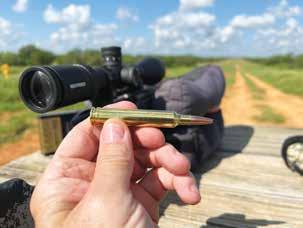
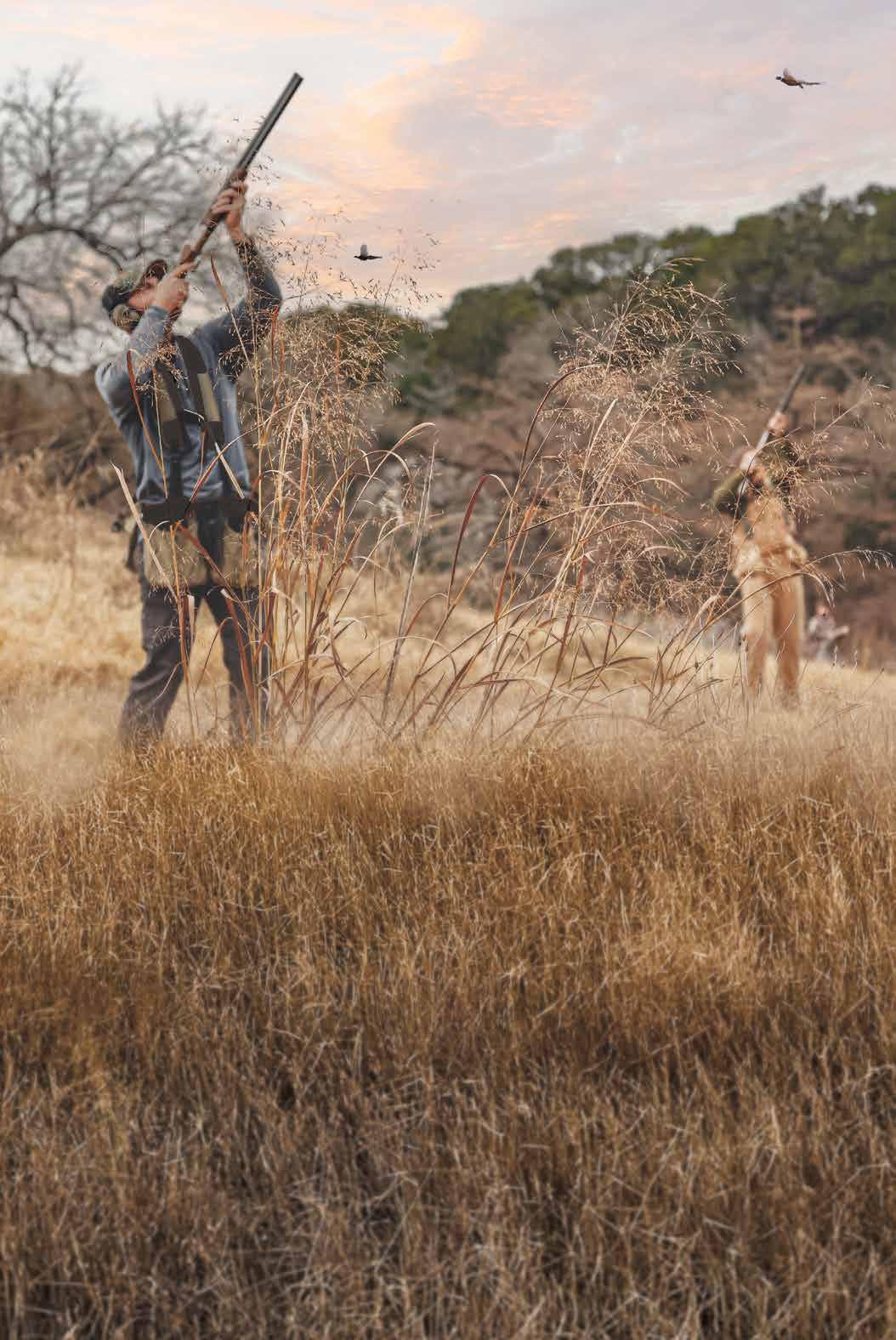


A sportsman’s nirvana featuring 325 acres of enticing wingshooting for wild quail and dove is now available. Sure, big deer roam the low-fenced property, and dove and turkey hunting is absolutely first-class on this strictly managed property. But it is the quail population that creates the real buzz here.











Near Aspermont in Stonewall County, the property features lush grasses and decent surface water part time. A water well with underground piping keeps troughs full. Electricity runs to the hunting shack, and superior roads exist all the way around with decent fences and very lightly grazed grass. The property has a number of possible home sites.
A humbling array of all that is wild and beautiful in West Texas — especially quail.

This hunting realm can be yours for $2,350 per acre.
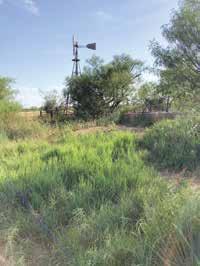
























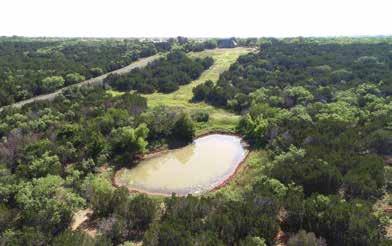
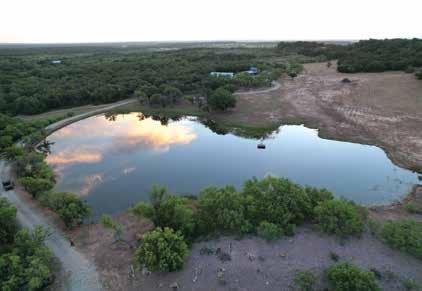








ForEverlast, a leader in both hunting and fishing products, presents the Trophy Chasers Texas Largest Whitetail contest — a totally virtual contest series. For an entry fee of $20, the hunter who brings us the largest free-range, native whitetail in Texas for the 2023-24 hunting season will receive $1,000 cash, an embroidered jacket and other prizes. With the success of the Texas Largest Trout tournament, which will conclude Sept. 4, we are excited to see who can top the leaderboard with a bruiser whitetail this season and be deemed the best in Texas.

Scores will be accepted from any Texas Big Game Awards certified scorer, B&C or P&Y official scorer or those listed as approved on TrophyChasers.net, so submitting your score and photograph will be simple and virtual. See the website for more details and to get signed up!

Sponsors for this year’s contest are: RaxMax Deer Feed, Brush to Bay Outfitters, Vortex Optics and Chuck Brown Ford.
TROPHY CHASERS ☎ (361) 798-1531
TROPHYCHASERS.NET
Guided wild quail hunts with rigs and exceptional dog work make this a rare experience. We will meet you at the border for this easy and convenient long weekend hunt. Call us to learn more.
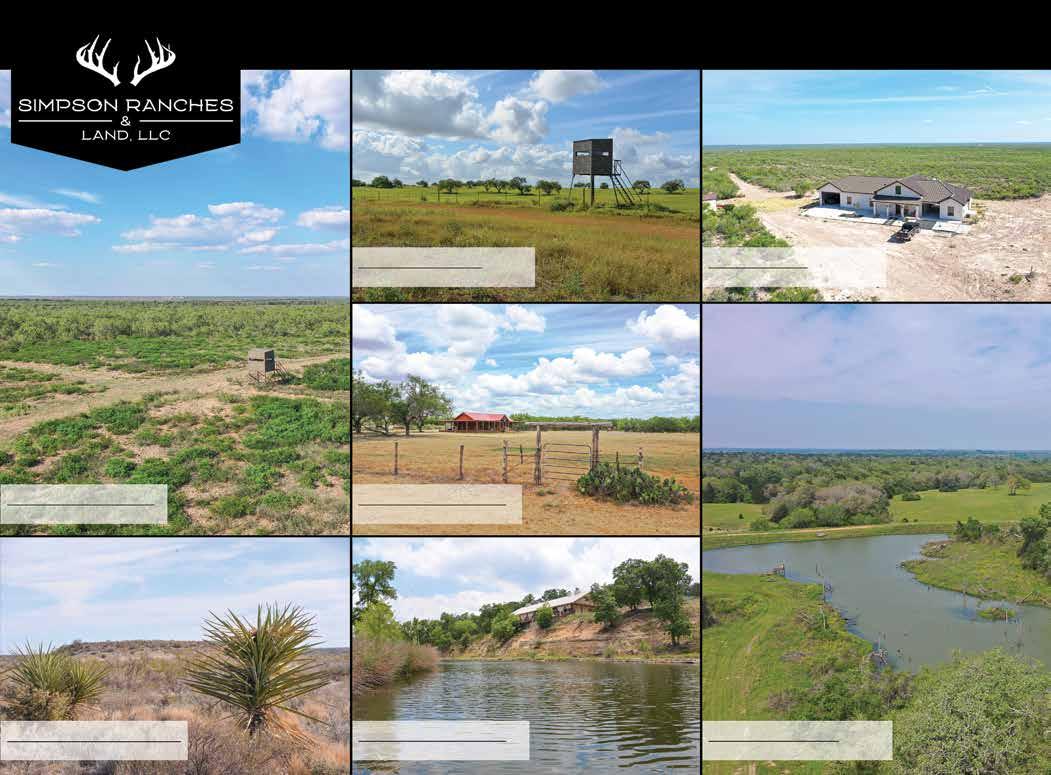












If you thought there was no such thing as natural pointing Labradors, think again. Labs are winning all over the country in contests that require steadiness to birds before hand retrieve. So many Labradors live only to please their owners, but few are bred to point, flush and recover. These pups are.
Pedigrees of these pups include bloodlines consisting of more than a dozen pointing and flushing national titles against all pointing breeds. These pups share an ancestry built on that special kinship to owners and family — especially kids — like no other dogs.
My dogs, Boo, a recent national champion, and his mother, Scout, fourth last year among 160 dogs in the BHU Open Pointing division, both sleep in our bed.
We have both yellow and black pups left.


A Place to Shoot
San Antonio, 210-628-1888
Abilene Indoor Gun Range
Abilene, 325-698-4224
Able Ammo
Huntsville, 936-295-5786
AJC Sports
Clute, 979-265-4867
Ally Outdoors
Midland, 972-332-3700
Richardson, 972-332-3700
Alpha Armory
Houston, 888-932-7660
Alpine Shooting Range
Ft Worth, 817-478-6613
Americana Arms, LLC
Beeville, 361-362-3673
Athena Gun Club
Houston, 713-461-5900
BPS Outfitters
Sherman, 903-832-2227
BTO Range
Conroe, 936-588-3333
Buck & Doe’s Mercantile, LLC
San Antonio, 830-980-3637
C.A.C Tactical
Southlake, 888-211-8191
Caroline Colt Company LLC
Abilene, 325-232-7501
Carroll’s Gun Shop
Whaton, 979-532-3175
Carter’s Country
Houston, 713-461-1844
Houston, 281-879-1466
Pasadena, 713-475-2222
Spring, 281-443-8393
DFW Shooting Sports
Bedford, 817-285-0664
Champion Firearms
College Station, 979-693-9948
Collectors Firearms

Houston, 713-781-5812
Danny's, Inc.
McAllen, 956-687-4692
Defender Outdoors
Fort Worth, 817-935-8377
DFW Gun Club
Dallas, 214-630-4866
Dury's Gun Shop
San Antonio, 210-533-5431
Field & Streams Sporting Goods
San Angelo, 325-944-7094
Fun Guns Waco, 254-755-0080
Gibson’s
Weatherford, 817-594-8711
Glick Twins
Pharr, 956-787-429
GRITR Sports
N. Richland Hills, 817-200-7470
Grabagun.com
Coppell, 972-552-7246
Guard & Defend Firearms
Silsbee, 409-201-9468
Guns Warehouse LLC
Cedar Park, 512-986-7330
Hoss Arms, LLC
New Braunfels, 830-609-8891
John Doe Investigations, LLC
Lewisville, 214-773-0129
Kirkpatrick Gun & Ammo
Laredo, 956-723-6338
Marksmen Firearms

Mansfield, 817-453-8680
McBride's Guns
Austin, 512-472-3532
Misson Ridge Range & Academy
San Antonio, 210-504-9000
Mister Guns LLC
Plano, 214-901-7429
Modern Pawn & Guns
Corpus Christi, 361-993-9390
Nagel's Gun Shop, Inc.
San Antonio, 210-342-5420
Nardis Gun Club
San Antonio, 210-369-9199
Omaha Outdoors
Rosenberg, 713-703-4648
Past & Blast Antiques & Firearms
Whitesboro, 903-564-5444
Point Blank Sporting Goods
Pharr, 956-992-8799
Primary Arms
Houston, 713-344-9600
Ranger Firearms of Texas Inc.
San Antonio, 210-822-4867









Tracking down Lake Waco crappie: Zach Minnix of Jig N’ Jerk Guide Service reports excellent crappie fishing. While a lot of people are catching plenty of smaller keepers off numerous brush piles in 8-18 feet of water, he prefers a stalking method in open water to put his clients on bigger fish. They are using 12- to 16-foot rods rigged with 1/8-ounce jigs tipped with a minnow. “I guide like I tournament fish, so right now, we’re chasing our fish in 2-7 feet of water on flats.”
Going deep for Lake Whitney catfish: Ryan Bolt of texasfins.com reports that fishing for blue catfish is excellent but did note that you will have to weed out a lot of smaller fish on your way to the bigger ones. His clients are primarily drift-fishing with cut baits, which include perch and freshwater drum, in waters ranging from 40 to 60 feet deep. “When I’m scanning areas, I’m looking for boulders because a lot of times right now, the fish are lying flat on the bottom right beside them.”
Going deeper for Canyon Lake stripers: Steve Nixon of sanantoniofishingguides.com reports that the striped bass fishing is good after catching a 21-pounder a few weeks ago, despite the lake’s low level. After marking stripers in open water, he will have his clients using live bait, primarily small perch, on rod and reel setups fished very deep. “We’re catching fish on a rod and reel at 50 feet but sometimes fishing 85-90 feet deep. You got to get them early, too, because the early-morning bite pretty much shuts off by 9 a.m.”







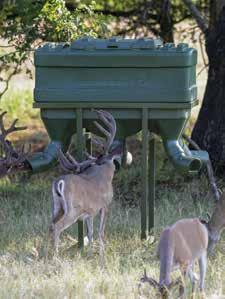










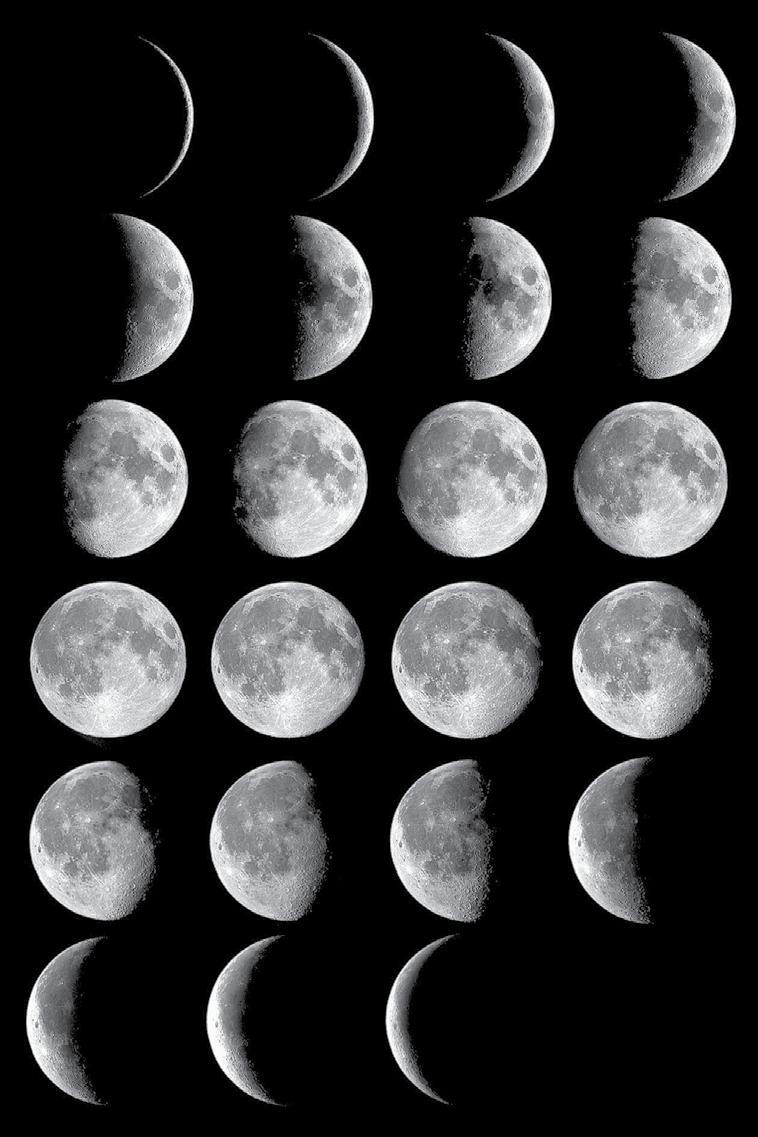



Continued from page 8
see if I could fix for them.”
Before they headed to the coast, he had his nephews apply for the NOAA shark tagging program. After a relatively simple application, each angler was sent a basic shark tagging kit, which includes three tags, a bunch of shark identification paperwork and instructions on how to tag them safely and properly. But not all sharks are eligible to be tagged. There are size and species requirements that help the program gather the most relevant data possible. These guidelines are all included in the tagging kit.
In order to target sharks specifically, Murphy had his nephews catch some bait while he configured the rods and reels on the beach. Once the boys had plenty of baitfish and Murphy set up the lines with heavy test and Maraca leaders, they loaded each hook with approximately 2 pounds of bait.
To get the bait far enough off the beach to increase their chances of success, Murphy paddled a kayak out past the third sandbar. After dropping the bait and running the lines tight, he set each up with a clicker and glowsticks so they could see if the lines got hit after dark.


It took about three hours for the first hit, which was reeled in by Wyatt, the oldest of
Continued from page 1
Murphy’s nephews. The fight to land this shark took about 15 minutes and yielded a 6 1/2-foot spinner shark.
“We got him in the fighting belt, so we were watching this shark jump like a marlin 350 yards out as we were standing on the beach,” he said. “He was doing flips and all kinds of stuff.”
Wyatt and the boys were thrilled with the experience of the fight and being up close with a shark. But they were also purposeful in the documentation and tagging of this and the other sharks they caught. In total, the group caught nine sharks over 11 hours. Four of those sharks met the criteria and were tagged and documented, providing valuable data to NOAA, while the others were released.
The shark tagging program is a volunteer-based collaborative effort between recreational anglers, commercial fishermen, and NOAA Fisheries to learn more about the life history of sharks. Since its launch in 1962, more than 295,000 sharks have been tagged. Data gained from the tagging program helps experts better understand stock structure, distribution, movements, migration patterns, population, age, growth rates, behavior and mortality.
“I am tired,” Capt. Justin Drummond, a TIFT veteran angler, said after setting foot on the dock. “I am ready to rest.”
Although no fish were onboard, the upsidedown flags were, representing the 16 billfish — one blue marlin, three white marlin and 12 sail fish — the crew caught and released.
Other tournament winners came in all sizes and ages, including toddlers and seasoned fishermen who have fished in TIFT for decades.
Niko Lukjanovs, 3, caught his first whopper, a 19-inch speckled trout, at about 9:30 a.m. Satur day.
Sisters Julianne and Jackeline Lawrence, of Bay town, showed up at the dock with the two heavi est black drum, taking first and second place, re spectively.
“We have been fishing TIFT for a number of years,” Julianne said. “But this is the biggest fish I have ever caught.”
Her drum weighed 13.9 pounds; her sister’s fish weighed 12.45 pounds.
Another winner was Keith Gerlach, who caught a monster wahoo that caused quite a stir.

It was the only fish that hung from the crossbar, and the wahoo even took the fisherman by surprise.
“To tell you the truth,” he said. “I did not think a wahoo got that big.”
He said the fish was a product of the 450 miles they traveled in the Mexican Gulf.
Melissa Mikulik, a member of the TIFT board of directors, said the event was once again a big success.
A total of 1,009 entries — including 86 deep sea and 143 bay boats — were registered for the two days of fishing held Aug. 4-5.
“We had a slight upward trend from last year’s tournament, and a lot more sponsors,” Mikulik said. “We had some new faces and those who have been coming back for years.”

Continued from page 8
holding two or three others right now.
Talasek said the flounder are fairly scattered, and that he might go several hundred yards without seeing a fish after gigging a handful in one area. Most of the flatfish in the Colorado have been 1516 inches, with a handful of larger ones pushing 4-5 pounds.
“The bigger fish have been hanging in a little deeper water,” Talasek said. “If the water is clear enough to see the bottom in areas that are 2 to 3 feet deep, there’s a good chance to stick some really solid flounder. The best gigging opportunities have been occurring during an incoming tide.”
Capt. Greg Novak said the flounder gigging action has been particularly sporadic around Corpus Christi, too. On some nights, he has been able to find fish pretty

quickly and on other nights, he’s had to cover a lot of water to locate them.
“There’s plenty of flounder out there right now, they just aren’t holding to a consistent pattern,” Novak said. “Tides have been fairly low during the overnight hours, and it’s definitely been tougher during an outgoing tide. When I’ve been able to gig during an incoming tide, the floundering action has been much better.”
The edges of guts, drop-offs, and channels along the upper Laguna Madre are where Novak has had the most success. Flats with hard sand and clean water have been holding the majority of the fish. The flounder have been staging in stretches with water depths anywhere from 8 inches down to 4 feet. Most of the fish have been in the 16- to 22-inch range.
Solution on Page 22
Jared Smith was named the new chief executive officer of AMMO, Inc.
Shane Cuperus was promoted to national sales manager of Luth-AR.
Pure Fishing promoted Jon Schlosser to chief product and brand officer.
Fiocchi hired Chris Tinkle as vice president of sales at Fiocchi USA.
Vista Outdoor named Jordan Judd as president of Simms Fishing Products.
Continued from page 9
big Super Spook baits in silver or blue — toward pods of bait to catch king mackerel.
Jenifer Wisniewski joined the National Deer Association as chief marketing officer.
Quantum, part of the Rather Outdoors group, is seeking a new brand marketing manager at its Columbia, South Carolina, headquarters.

Franchi USA is seeking a product manager for the Franchi brand.
Christensen Arms hired Randy Stumph as its new General Manager, Michael Halleron as executive vice president of sales and Willie Vernon as executive vice president of marketing.
Curtis Thorpe, who has fished those rigs, said there can be a frenzy of action at night.
ACROSS
3) A retriever
5) Hunting TV host
9) Shotshell brand
10) Trout species
11) One of Leopold’s five tools
13) Thermal optics brand
15) Safari destination
17) Falls County’s seat
18) Sinker type
20) African game species
24) One of the mergansers
27) Group of giraffes
29) The tail fin
31) An offshore target
32) Must for the summer angler
36) A Great Lake
37) Granbury’s county
38) Some hunters eat this dove organ
39) East Texas lake
40) A top-water lure
41) West Texas lake
DOWN
1) The young goose
2) Wilbarger County’s seat
4) Texas mountain range
6) Fishing lure brand
7) A favorite dove-hunting gauge
8) Fishing rod brand
10) Gregg County’s seat
11) Panhandle river
12) Spinner bait blade, _____ leaf
14) An exotic in Texas
16) Mozambique’s capital
19) Central Texas lake
20) The bronze back
21) A setter
22) Bryan’s county
23) A shooting sport
25) Another name for Jim Chapman Lake
26) Sherman’s county
28) Rifle brand
29) Good redfish bait
30) Mule deer hunting state
33) A sunfish
34) Shot size used by dove hunters
35) Houston-area lake
“There is nothing better than chunking big top-water lures to a pod of bait fish and having a king mackerel blast into it,” said Mike Simmons, who has been fishing for kings off the Port Mansfield jetties for years. “Some of the kings will rocket out of the water when they hit a top-water lure. It’s an absolute blast.”
Simmons added that big dorado can be caught around the nearshore rocks out to about 5 miles off the beach, noting 1-ounce silver spoons as the most popular lure.
Live bait has still been producing the most consistent bite, however. In fact, during a recent billfish tournament out of Port O’Connor, a team used a live yellowfin tuna to catch a blue marlin that weighed 703 pounds near a deep-water rig about 130 miles out.
“The rigs are lit up and the tuna, both blackfin and yellowfin, will feed under the lights,” he said. “The big yellowfins will hit chuggers. The blackfins are usually caught on free-lined chunk baits.”
Capt. Bill Platt, who has been fishing off the Texas Gulf Coast for decades, has made a name for himself by winning king mackerel tournaments using almost exclusively live hardtails.
“You can’t beat a live bait, especially right now during the hot summer months,” he said. “I usually bump troll two hardtails along rips and grass lines, or anywhere I can find some sort of baitfish activity. One of our best kings weighed just over 62 pounds. It was caught on a bump-trolled hardtail that was about 8 inches long.”
Continued from page 9
and rafting skills, business organization strategy, people handling skills, first aid basics, and detailed instruction for teaching new fly-fishers while on the water,” Stubbs explained. “We also share insider secrets on technical fishing techniques, including private access points.”
Anyone who’s considering capitalizing on the increasingly common culture of Texas fly-fishing would benefit from the course.
Puzzle by Craig Nyhus, Lone Star Outdoor News

8 cups chicken broth
5 stalks celery, chopped
3 small onions, chopped
3 tbsps. garlic, minced
1 cup mushrooms, sliced
Salt and pepper
24 dove
1 1/2 cups flour
3/4 cup water
“Guiding has always been about a particular lifestyle,” Stubbs said. “I have had many ‘real’ jobs along the way, but always returned to fly fishing because of the fun and challenges inherent in the profession.”
*email LSON your favorite recipe to editor@lonestaroutdoornews.com.
Boil celery, onions, garlic, mushrooms, salt and pepper in chicken broth. Add the dove and let simmer about 20-30 minutes or until tender. Remove and let cool. Return broth to boil. Lightly flour work surface. Mix flour and water to create a ball of dough. Roll dough into thin rectangle and cut in strips. Pull each strip up, stretching it to make thinner. Drop strips into boiling broth one at a time and cook for 20 minutes.
Shred the dove meat while dumplings are cooking. Once dumplings are finished, add shredded meat to broth.
—Georgia DNR
10 ozs. fresh asparagus spears, cut into
1-inch pieces
1 1/2 pounds skinless bluegill fillets
1/4 cup margarine
1 medium onion, chopped
1/3 cup all-purpose flour
1 cup milk
1 1/3 cups shredded cheddar cheese
1/4 tsp. salt
1/4 tsp. pepper
1 cup crushed saltine crackers
Heat oven to 350 degrees. Spread asparagus evenly over bottom of 10×6-inch baking dish, then arrange fish fillets on top of asparagus. In a separate saucepan, melt 3 tbsps. margarine over medium heat. Add onion and cook for 3-5 minutes. Stir in flour and cook for 2 minutes, stirring constantly. Blend in milk, cook for 3-5 minutes, stirring constantly. Add cheese, salt and pepper. Remove mixture from heat. Stir cheese until melted, then spoon evenly over fish fillets. In saucepan, melt remaining margarine over medium heat. Remove from heat and add cracker crumbs and stir. Sprinkle crumb mixture evenly over cheese sauce. Bake 40-45 minutes. Let stand for 10 minutes before serving.
—West Virginia DNR
SABINE LAKE: 90 degrees. Speckled trout are good at the Intracoastal and the jetties on top-waters and soft plastics. Redfish are fair on live shrimp under popping cork.
BOLIVAR: 87 degrees. Black drum are good in the surf on shrimp. Redfish are fair on shrimp under a popping cork. Speckled trout are fair on free-lined shrimp and croaker.
fish are fair on cut mullet. Speckled trout and black drum are fair on shrimp.
PORT O’CONNOR: 80 degrees. Black drum are good on dead shrimp. Redfish are slow. Speckled trout are good in the surf on live croaker and artificials.
ROCKPORT: 88 degrees. Redfish are good on paddle tails, top-waters, live bait and cut bait. Speckled trout are on soft plastics and live bait. Black drum are slow to fair on dead shrimp.
PORT ARANSAS: 89 degrees. Bull redfish are good on live or cut mullet. Speckled trout are fair on croaker.
TRINITY BAY: 89 degrees. Speckled trout are fair on croaker and live shrimp. Redfish are fair on shrimp.
EAST GALVESTON BAY: 89 degrees.
Speckled trout fair on live shrimp and soft plastics. Redfish and speckled trout are fair on shrimp-imitation lures under popping corks.
WEST GALVESTON BAY: 89 degrees.
Speckled trout are fair wading with croaker and shrimp. Redfish and black drum are fair on live shrimp.


TEXAS CITY: 87 degrees. Speckled trout are fair on live shrimp and croaker. Black drum are slow.
FREEPORT: 86 degrees. Speckled trout and redfish are good on croaker and drifting shrimp under a popping cork.
EAST MATAGORDA BAY: 85 degrees. Redfish are fair drifting live shrimp and artificials. Speckled trout are slow to fair wading with croaker.
WEST MATAGORDA BAY: 85 degrees. Red-
CORPUS CHRISTI: 89 degrees. Speckled trout are fair on shrimp and free-lined croaker. Black drum and redfish are fair on shrimp.
BAFFIN BAY: 88-94 degrees. Speckled trout are very good on top-waters and soft plastics. Redfish are good on purple and chartreuse plastics and shrimp.
CUSTOM
PORT MANSFIELD: 88-91 degrees. Speckled trout are fair on small plastics and top-waters.
SOUTH PADRE: 87 degrees. Black drum are good on shrimp. Speckled trout are fair to good at night under lights on soft plastics.
—TPWD
WWW.EBROUSSARD.COM | (828) 781-1281 | EBROUSSARD@EBROUSSARD.COM

DOVE HUNTINGJIM WELLS COUNTY
700+ acres with multiple water holes & milo fields
Special White-Winged Season South Zone: Sept. 2-4 & Sept. 9-11
And Regular Season: Sept. 14 - Oct. 30 & Dec. 17 - Jan. 22 (361) 701-4711
RED RIVER TRACT IN COOKE COUNTY
Corps. land and rare boat ramp access. $495K, will finance. (214) 463-2217
TEXAS TROPHY
WHITETAILS
Axis, Blackbuck, Hogs Free range whitetail
TROPHY DEER LEASE Comal County high fence, 65 acres $15,000
5 deer, no more than 2 bucks. Dennis (210) 602-6360
WHITETAIL + HOGS
Brush country whitetail bucks!
Doe, management bucks and hog hunts
All-inclusive guided hunts zacatehunts.com
(325) 446- 6716
DEER HUNTERS
Used Deer Blinds for sale 4x6 fiberglass with 10-foot towers


Three available, $1850 each
ANTLERS WANTED Buying
(830) 997-2263
Used feeders also available Text for photos Located 1 hour north of Abilene (214) 695-2950
QUAIL HUNTING
Guided-Self Guided-Training 700 yard RANGE PoetryShootingClub.com (214) 728-2755
65 acres, Lodging RV Power Available Huntershilton.com for more info (361) 244-0544 or (361) 443-9330
TDHA - JOIN TODAY Texas Dove Hunters Association TexasDoveHunters.com (210) 764-1189




COLORADO ARCHERY ELK AND BEAR HUNT Sept. 16-21 on a private ranch with hunting lodge in unit #25. $6,000 for a group up to 7. Property borders White River National Forest. Over the counter licenses. (970) 243-5362


MID-TEX LAND SERVICES LLC
Land Clearing, Mulching, Rock Milling, Roads, Excavation Professional and insured WWW.MIDTEXLAND.COM (254) 595-1696
EXOTICS + WHITETAIL
Several species Trophy and meat hunts Owner guided Very reasonable Let’s have fun! (325) 475-2100
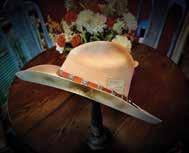
SKID STEER BRUSH
CUTTING / HYDRO AX
All your clearing needs, right-of-ways, senderos, creek & river bottoms, fence lines etc. South Texas Call Frank (512) 699-5381
NEED
CRAPPIE. CATFISH.
SANDBASS. STRIPER. Guided Hunts and Offshore Adventures. www.DFWOutdoors.com Call Capt. Lane Palmer at (817) 266-9811
BAY FISHING 6 Hour Trip from $275 Port Isabel,
Jake at (208) 477-9065
PART-TIME DELIVERING LONE STAR OUTDOOR NEWS Rio Grande Valley and Victoria/Sugar Land Areas (214) 361-2276

A two-year investigation discovered the illegal trafficking of ginseng in Ohio, West Virginia, Virginia, New York, Kentucky, Pennsylvania and Indiana.
The investigation spanned 21 Ohio counties and resulted in 110 defendants being charged with a combined 259 violations. Charges included the illegal harvest of ginseng, falsification or failure to keep ginseng records, illegal purchase of ginseng, and harvest of ginseng without permission. Defendants in the case combined to pay $76,178 in fines and $21,633.05 in court costs, with an additional $20,871.68 in cash being forfeited. The investigation targeted licensed ginseng dealers, unlicensed ginseng dealers, and out of season diggers.
American ginseng is a perennial herb that is found in small, scattered populations. Ohio is one of 19 states with a ginseng management program, which allows for the legal export of ginseng. In Ohio, ginseng can only be harvested between Sept.1 and Dec. 31. A ginseng dealer permit issued by the Division of Wildlife is required to buy ginseng for resale or export, and ginseng must be certified by the Division of Wildlife before it is exported.
—ODNR
WASHINGTON, D.C.
Waterfowl and upland hunters will have one less restriction when bringing birds back from Canada this fall. The U.S. Department of Agriculture’s Animal and Plant Health Inspection Service, after consultation with waterfowl biologists, will now allow skin to remain intact on hunter-harvested carcasses.
All previous restrictions remain the same. Under the revised restrictions, unprocessed hunter-harvested wild game bird carcasses originating from or transiting Canada must meet the following conditions:
• Viscera, head, neck, feet and one wing have been removed.
• Feathers have been removed, with the exception of one wing.
• Carcasses must be rinsed in fresh, clean, potable water prior to packaging and must not have visible evidence of contamination with dirt, blood or feces.
• Carcasses must be imported in leakproof plastic packaging and stored in a leak-proof cooler or container during transport and import.
• Carcasses must be chilled or frozen during transport and import. —DU
In western portions of North Carolina, two elk crossing signs in the heart of the state’s elk range were recently stolen.
Six signs went up last year along U.S. Highway 19 crossing Soco Mountain from the Jackson-Haywood County Line and the town of Maggie Valley.
Each of the signs has eight solar-powered LED lights that flash 24/7 and cost $1,100 each. Shortly after the theft, a car hit and killed a cow elk.
Word about the theft spread and Rocky Mountain Elk Foundation member Scott Nielsen posted the need for funding to replace the signs on his Facebook page. The community responded by generating more than $9,000 to buy seven new signs.
Executive Editor Craig Nyhus Managing Editor David Schlake Design Editor C2-Studios, Inc. Copy Editor Carl Ellis

For home or office delivery, go to LSONews.com, or call (214) 361-2276, or send a check or money order to the address below. Lone Star Outdoor News, ISSN 2162-8300, a publication of Lone Star Outdoor News, LLC, publishes twice a month. A mailed subscription is $35 for 24 issues. Newsstand copies are $3, in certain markets copies are free, one per person. Copyright 2023 with all rights reserved. Reproduction and/ or use of any photographic or written material without written permission by the publisher is prohibited. Subscribers may send address changes to: Lone Star Outdoor News, P.O. Box 551695, Dallas, TX 75355 or email them to editor@lonestaroutdoornews.com.



AUGUST 11-13
TEXAS TROPHY HUNTERS ASSOCIATION
Fort Worth Extravaganza
Fort Worth Convention Center (210) 523-8500 ttha.com
LADIES KINGFISH TOURNAMENT

South Padre Island (956) 761-4412 spichamber.com

AUGUST 12
ROCKY MOUNTAIN ELK FOUNDATION
North Texas Banquet
Embassy Suites, Grapevine (214) 693-8523 rmef.org
AUGUST 16-18
ROLLING PLAINS QUAIL RESEARCH




FOUNDATION
Statewide Quail Symposium Abilene quailresearch.org
AUGUST 17
DALLAS SAFARI CLUB
Bucket List Hunts with Craig Boddington
The Adolphus Hotel (972) 980-9800 biggame.org
COASTAL CONSERVATION ASSOCIATION
Hill Country Banquet New Braunfels Civic Center (210) 260-8968 ccatexas.org
DUCKS UNLIMITED
Baytown Dinner
Westside Complex Community Building (832) 597-7542 ducks.org
AUGUST 18-19
TEXAS DEER ASSOCIATION
Annual Convention Marriott Hill Country (512) 499-0466 texasdeerassociation.com

NATIONAL WILD TURKEY FEDERATION

Blackland Prairie Banquet
Knights of Columbus Hall, West (254) 855-2902 nwtf.org
AUGUST 18-20
TEXAS TROPHY HUNTERS ASSOCIATION San Antonio Extravaganza Freeman Expo Hall (210) 523-8500 ttha.com
AUGUST 19
DELTA WATERFOWL
Greater Longview Banquet
Maude Cobb Convention Center (903) 930-1830 deltawaterfowl.org
AUGUST 19-20
TEXAS GUN & KNIFE SHOWS
Abilene Convention Center (830) 285-0575 texasgunandknifeshows.com
AUGUST 24
COASTAL CONSERVATION ASSOCIATION

Lower Laguna Madre Banquet Port Isabel Event & Cultural Center (956) 491-8148 ccatexas.org
AUGUST 25-26
DEER BREEDERS CORP

Annual Convention Hyatt Hill Country (972) 289-3100 dbcdeer.com
AUGUST 26
DSC FOUNDATION

Friends of Conservation Gathering

Conroe Taxidermy (972) 980-9800 biggame.org
QUAIL COALITION
South Texas Chapter Banquet
Richard M. Bouchard Fairgrounds Robstown (361) 219-0427 quailcoalition.org
DUCKS UNLIMITED

Celina Dinner
3R’s Ranch, Prosper (972) 822-8549 ducks.org
AUGUST 31
ALLEN DINNER
Cross Creek Ranch, Parker ducks.org
SEPTEMBER 2

JOSHUA CREEK RANCH Summer Fun Shoot (830) 537-5090 joshuacreekranch.com
SEPTEMBER 7
DALLAS SAFARI CLUB
Awards and Member Stories DSC Headquarters (972) 980-9800 biggame.org
SEPTEMBER 9-10
TEXAS GUN & KNIFE SHOWS Kerrville Expo Hall (830) 285-0575 texasgunandknifeshows.com



Continued from page 1
producing the most action.
“When working the grass mats with a frog, making long casts that are parallel to the riverbank has been the ticket for success,” Medina said. “Most of the bass I’ve been catching have been in the 2- to 3-pound range, but I have been landing some pushing 6 pounds here and there.”
Medina said the first couple of hours of morning light have been rendering anywhere from 10 to 20 bites.
Shane Davies, owner and operator of River Run Guide Service, has been finding success kayak fishing with his anglers along the Brazos River below Lake Whitney, Possum Kingdom Lake and Lake Granbury.
Top-water lures have been producing bites from largemouth bass early in the morning for Davies and his anglers. After the sun rises higher into the sky, he’s been switching over to soft plastics. Setting out a few rods with live gizzard shad has also produced plenty of action from several different species.

“Just about all of the fish we are catching are hanging out near the edges of deeper holes,” Davies said. “Most of the fish come from areas with 3 to 5 feet of water. You just never know what you’re going to catch on the Brazos right now.”

Capt. Cody Cryer of Garzilla Guide Service, said alligator gar in the Trinity River have been holding pretty steady to a late summertime pattern recently. On average, his customers have been catching about six gar per trip. Most have weighed 80-150 pounds, but he is seeing bigger fish every now and again.
Holes along river bends that are anywhere from 15 to 20 feet deep have been consistently holding the largest concentrations of trophy alligator gar. Cryer said most of the fish have been feeding along the bottom and that chunks of cut buffalo have been producing the most strikes.
“There have also been quite a few longnose gar along the Trinity recently,” Cryer said. “We’ve been able to catch a lot of them on Rat-L-Traps. Most have been weighing in at 10 pounds or less.”
SLEEPING PILL
















POLEAXE EXECUTIONER PALE HORSE
FLAT LINER



MEAT ON THE DIRT NAP
LINER
VITAMIN N DRT UNDERTAKER WIDOW MAKER



















OUT CANCELED HAMMER OF THOR
NUMBER’S UP

















SMOKE





BOOM STICK Whatever

LIGHTNING BOLT

PILEDRIVER LIGHTS

FREIGHT TRAIN
DEEP SIX COFFIN NAIL SEASON ENDER
DEATH ON A CRACKER
REAPER ERADICATOR
FLYING HEARSE
NUMBER’S SIX HANDLED SEDAN

